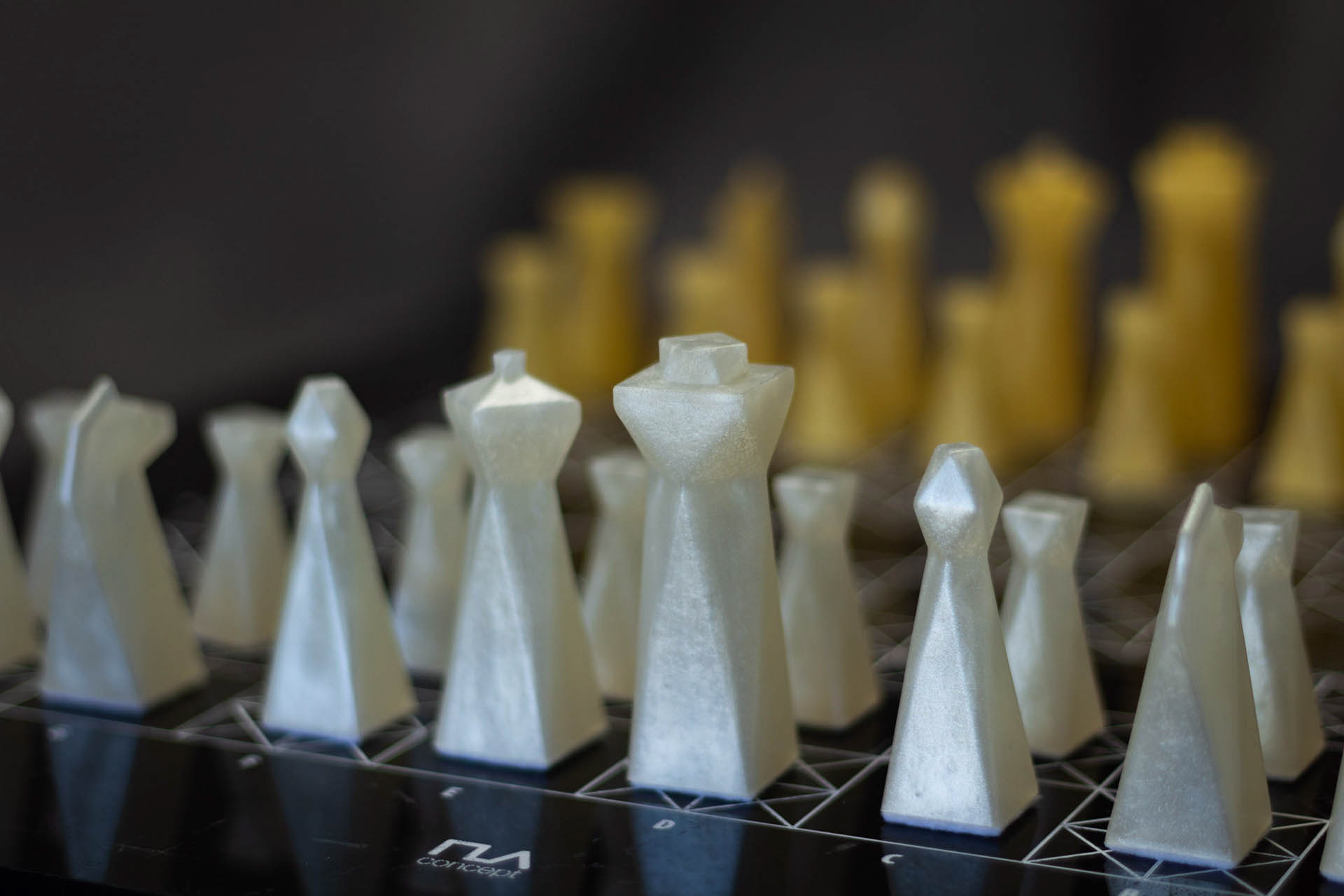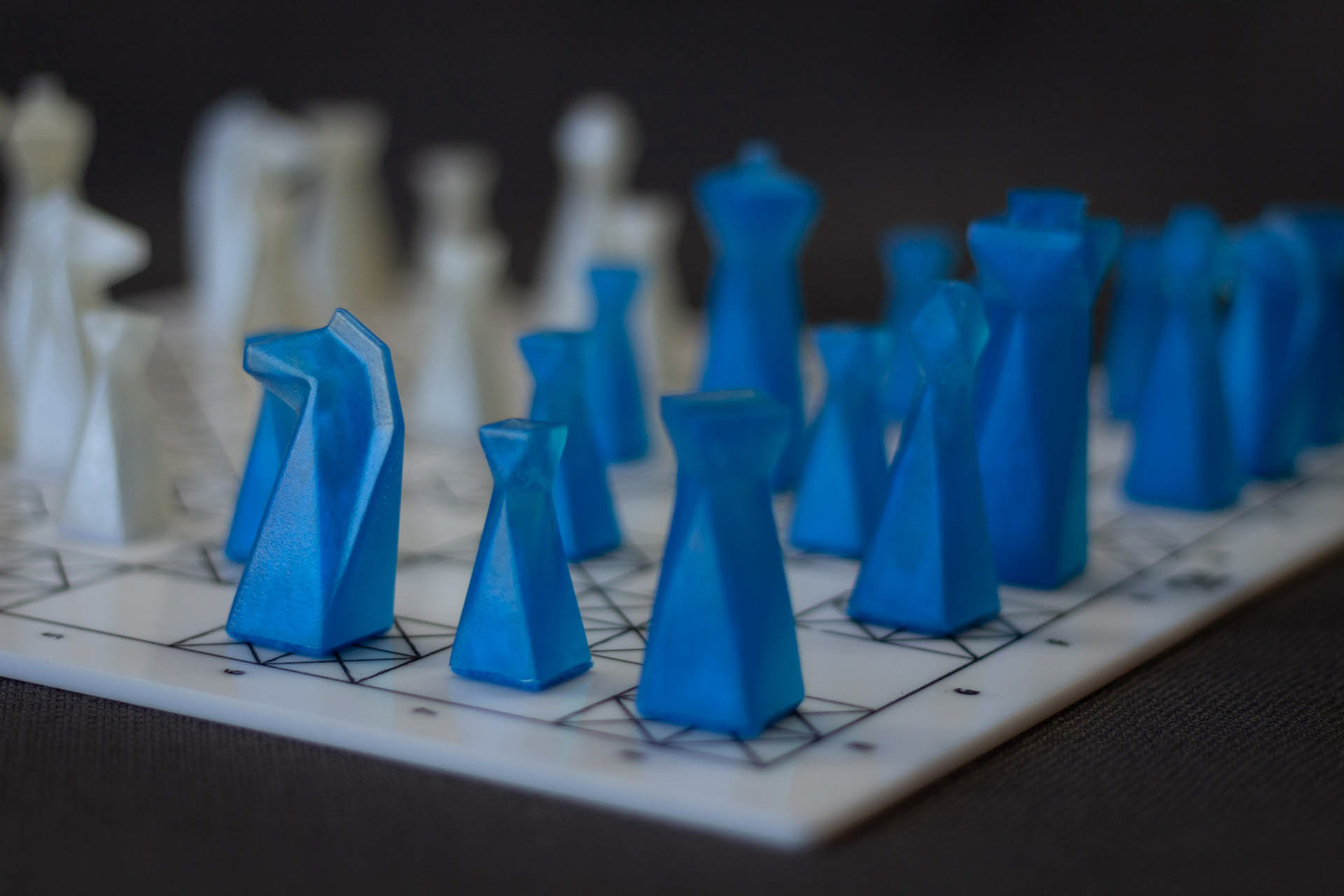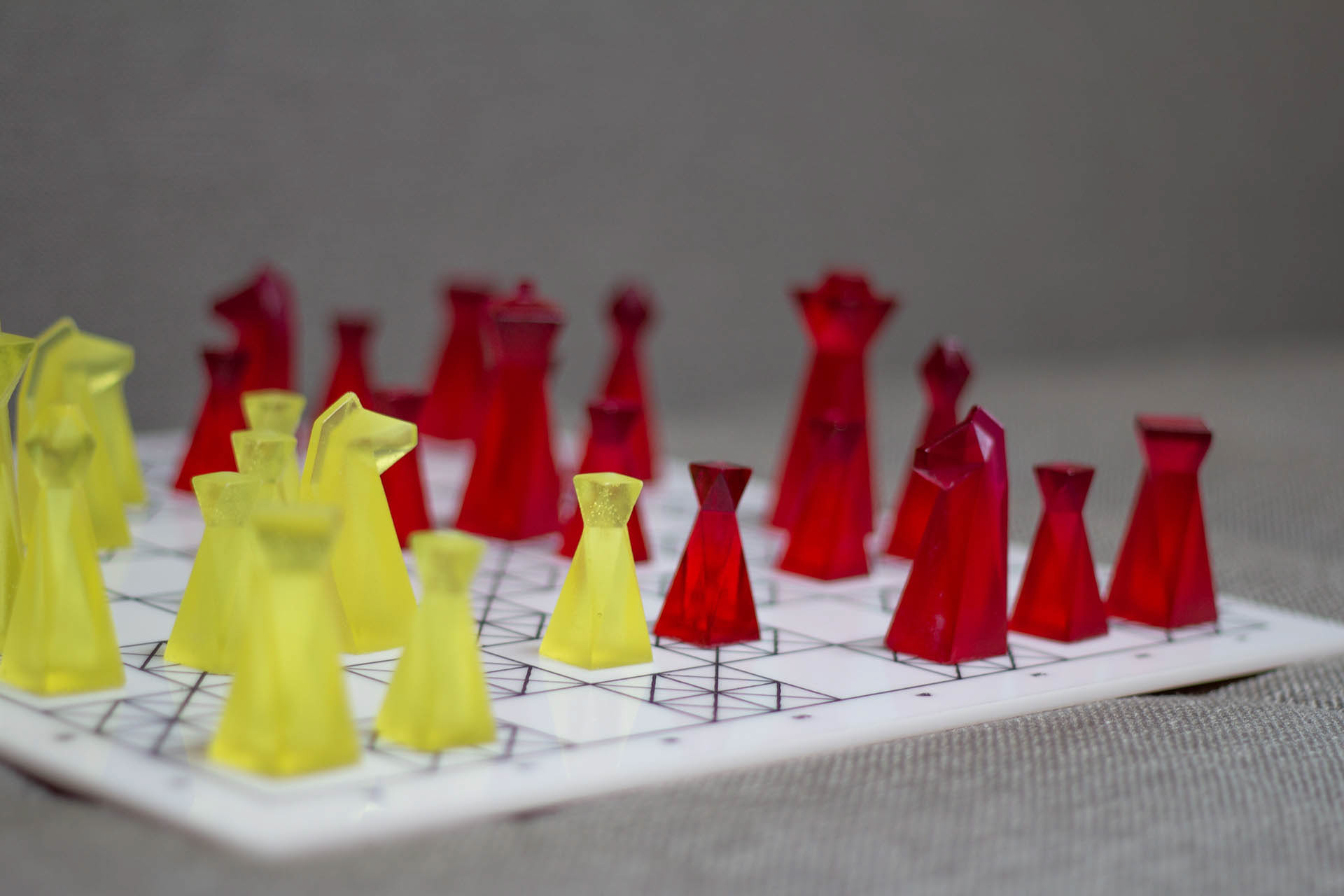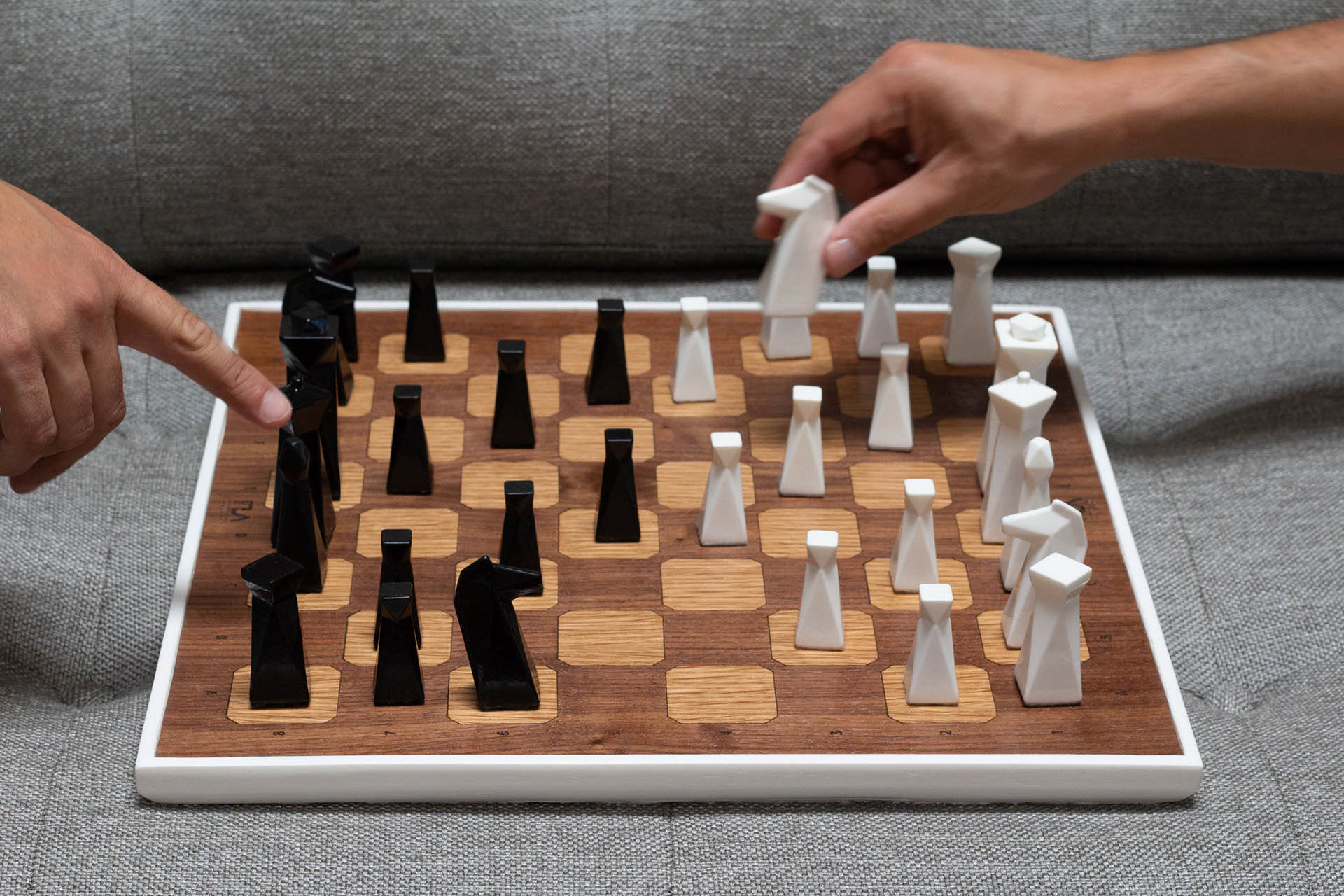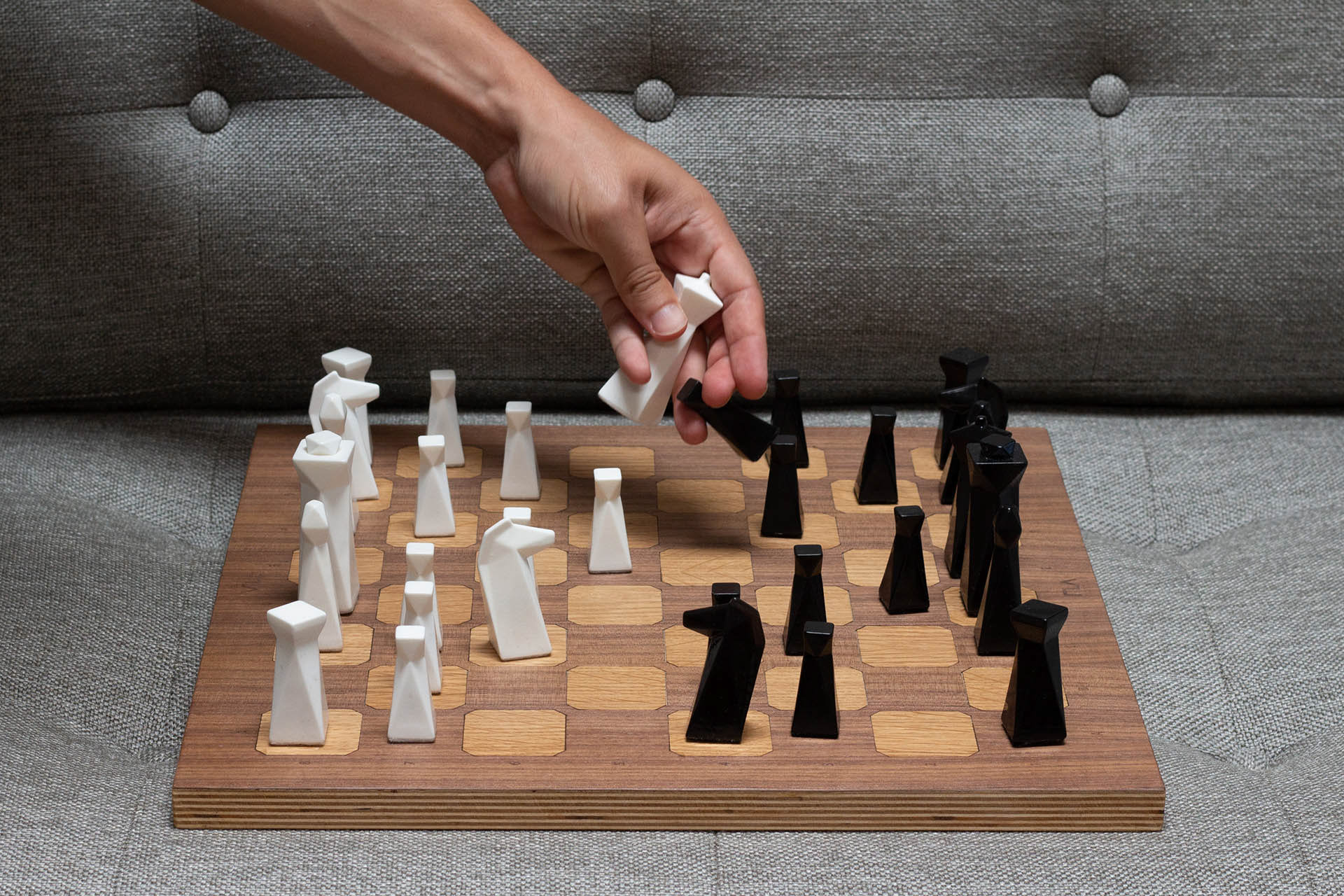A MODERN CHESS SET CASE STUDY
Role
Industrial Design - Product Development - Manufacturing - Project Management
CLIENT
TIMEFRAME
2014 - Current
overview
Classic games like chess, checkers, backgammon, foosball, etc. have been a passion of mine. These games have been in our lives for a long long time and the market is dominated by old, classic designs of these games. Most of these games are in our homes and when we finish a game, we put the board back in its box. I wanted to create games that even after they finished playing, people still want to keep on their tables, display it as a modern art piece.
the problem
- It's hard to find a modern chess set
- There are some modern, experimental chess sets but the pieces are not easy to identify
- People don't want to display their classic, old, store bought chess sets at home
- Chess sets are great gifts but cheap ones look bad and the ones that look good are very expensive
the solution
PLA chess sets are modern, unique, handmade sets with a clean aesthetic. The flagship set has a resin frame and a hardwood top, which combines two different materials in a unique way. The chess pieces have a polygonal, faceted form; with the optimum weight to hold, looks very modern while being super easy to identify. PLA chess sets are amazing gifts for loved ones, quality materials, handmade with care and while looking super elegant, not having the price tag of fashion brands.
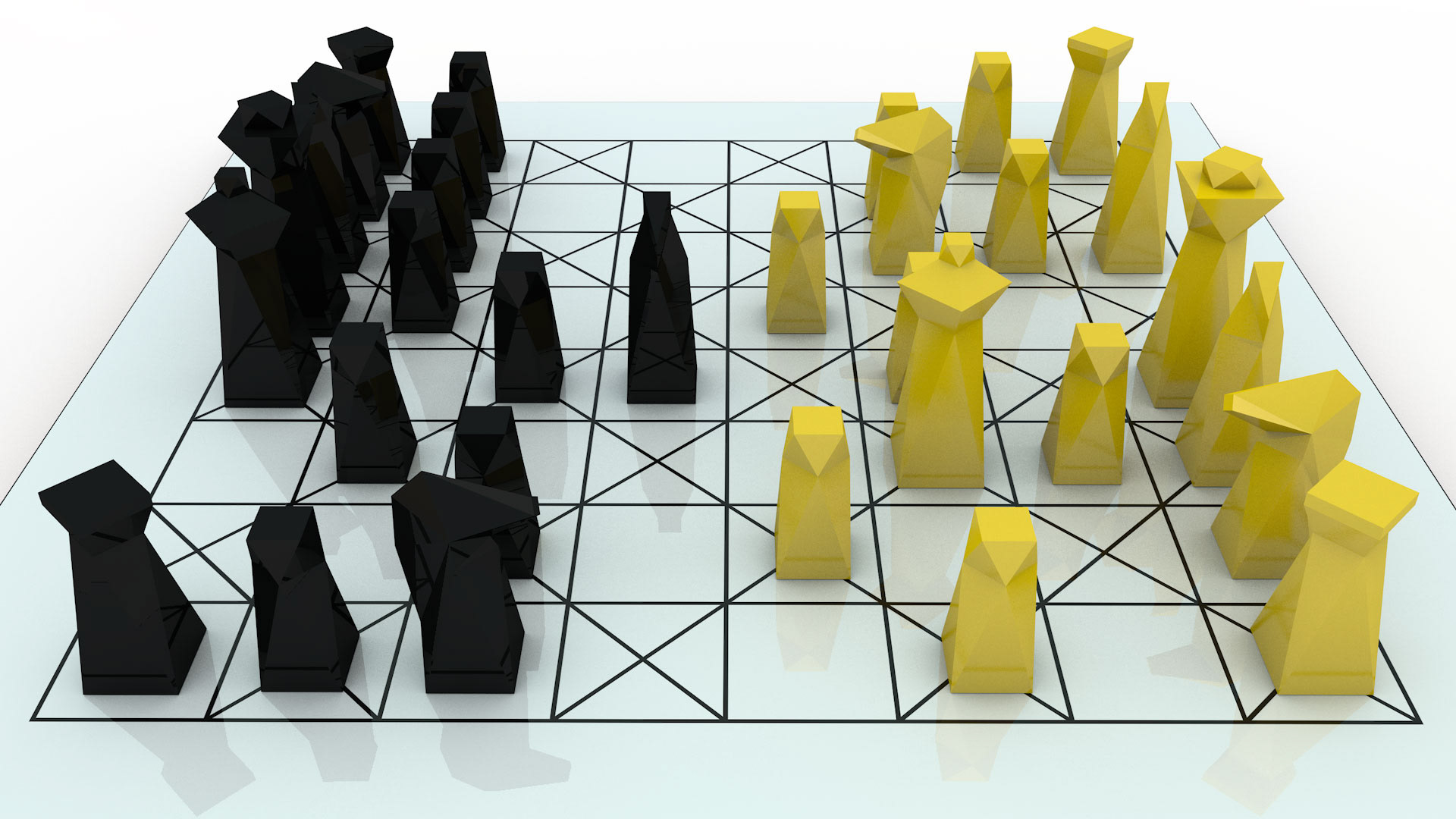
First render of the first concept

Final product
user research
I sent an online survey to hundreds of people to get an insight for their idea of a ‘perfect chess set’.
%54 said they don’t own a chess set
%48 said they will buy a modern looking classic style chess set
%42 said they will buy a unique, modern looking chess set
%46 said they want wooden chess pieces with weights in them
%8 said they want plastic weighted chess pieces
%44 said they won't care about the color of the pieces as long as they look modern
%68 said they like a wooden board
%24 said they want a heavy, non-foldable chess board
%52 said they would like a foldable but sturdy chess board
the design process
When I started working on this collection, my first focus was to make a chess set with low poly chess pieces that looked modern, minimalistic. There were lots of sketches, foam and 3D printed prototypes until we were happy with the form of the pieces. As one would expect, the knight took the most time to perfect.
GOING CRAZY WITH IDEAS
Depending on the user research and my own idea of a modern geometric chess set, I started sketching, 3D modeling and rendering different designs. Some of these designs were selected and sent to the user research group for feedback.
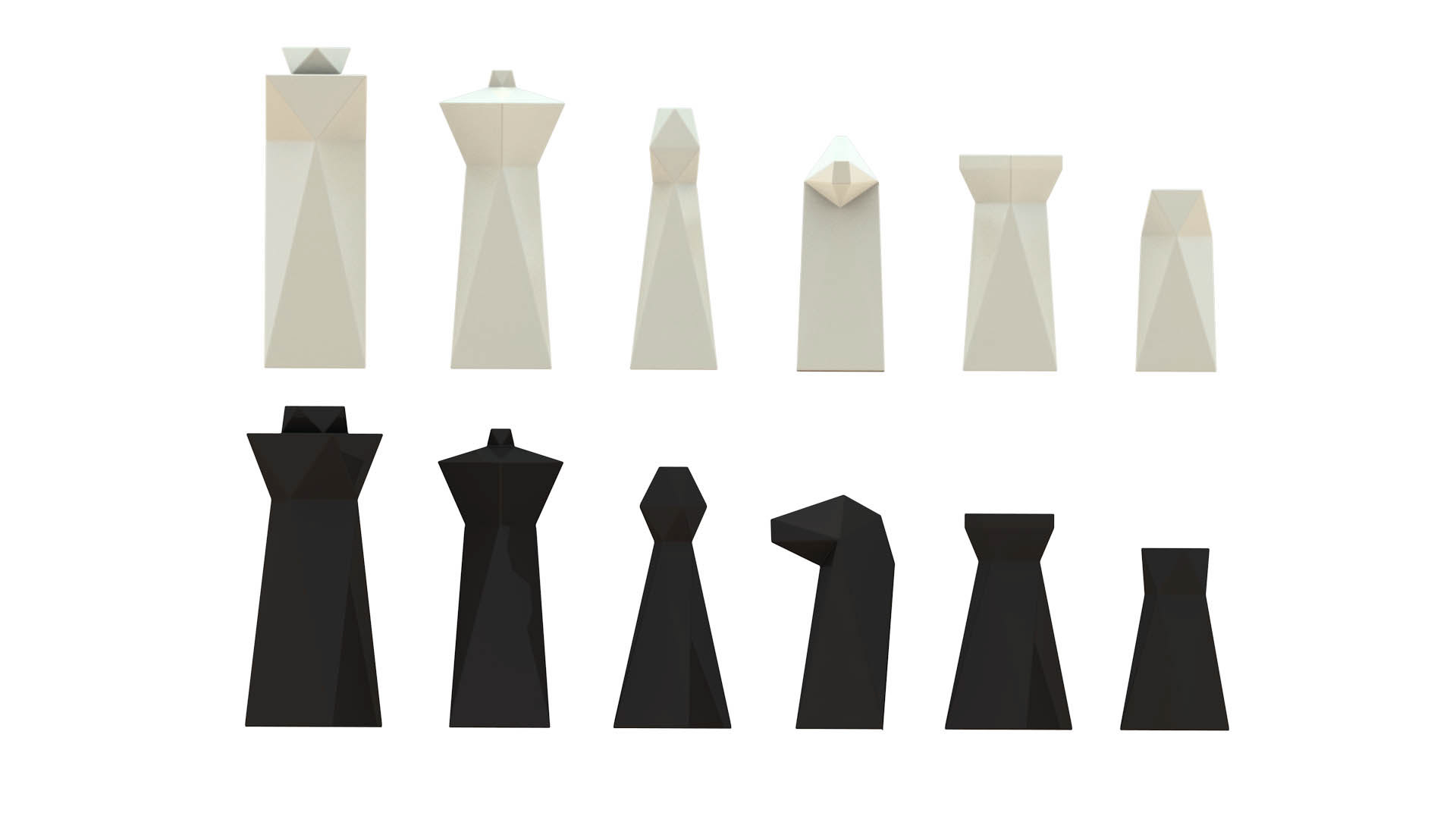

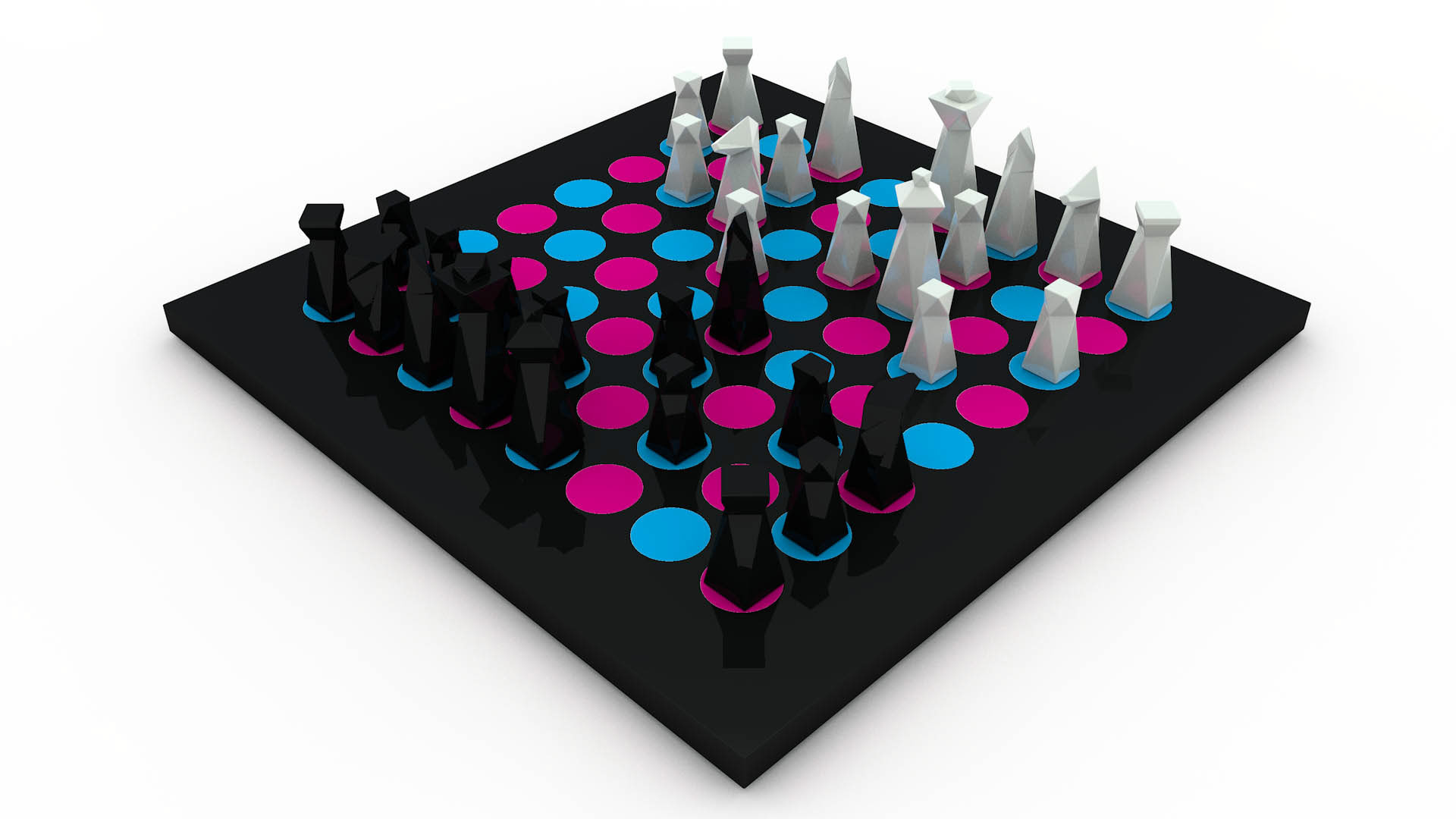
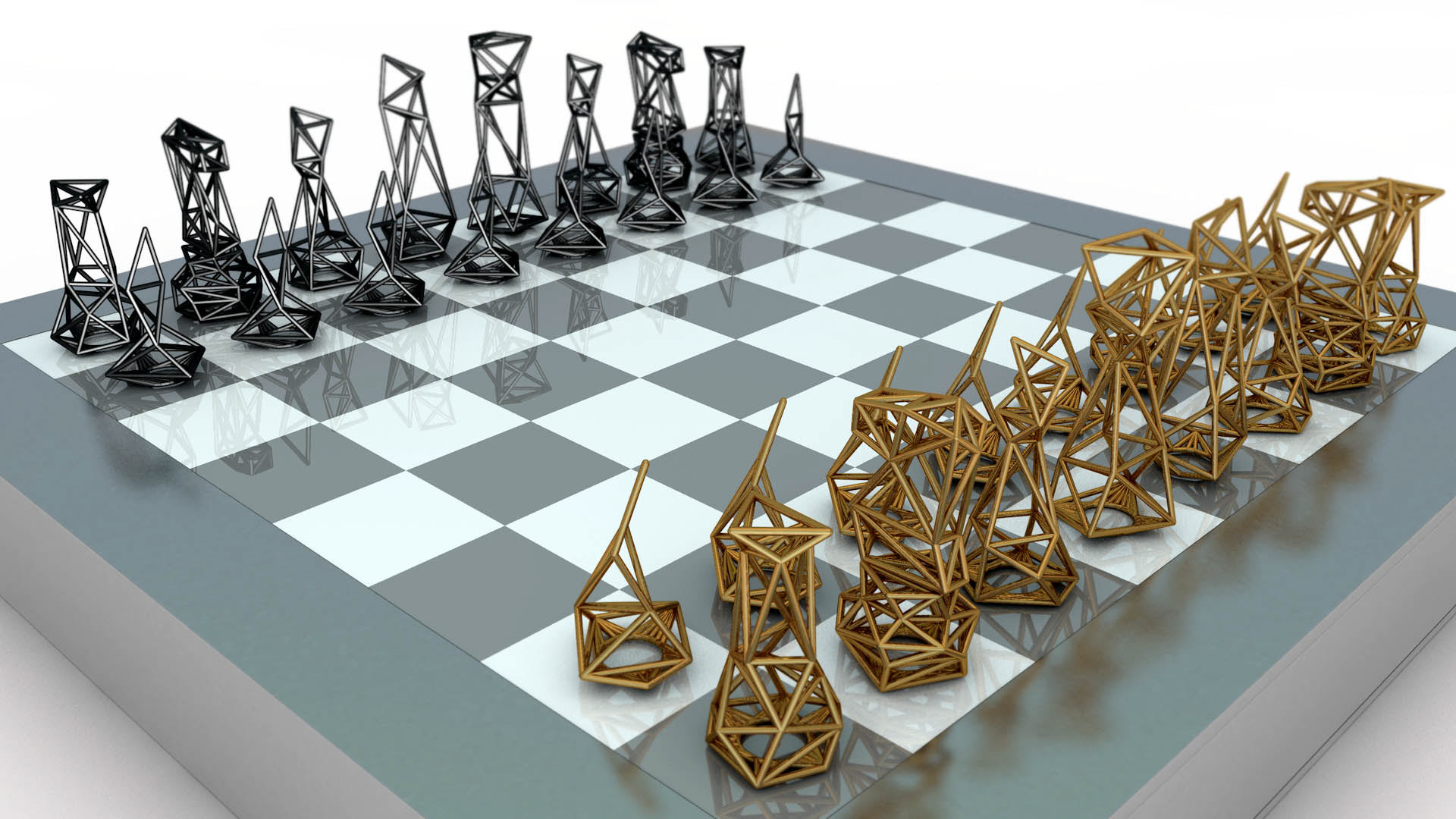
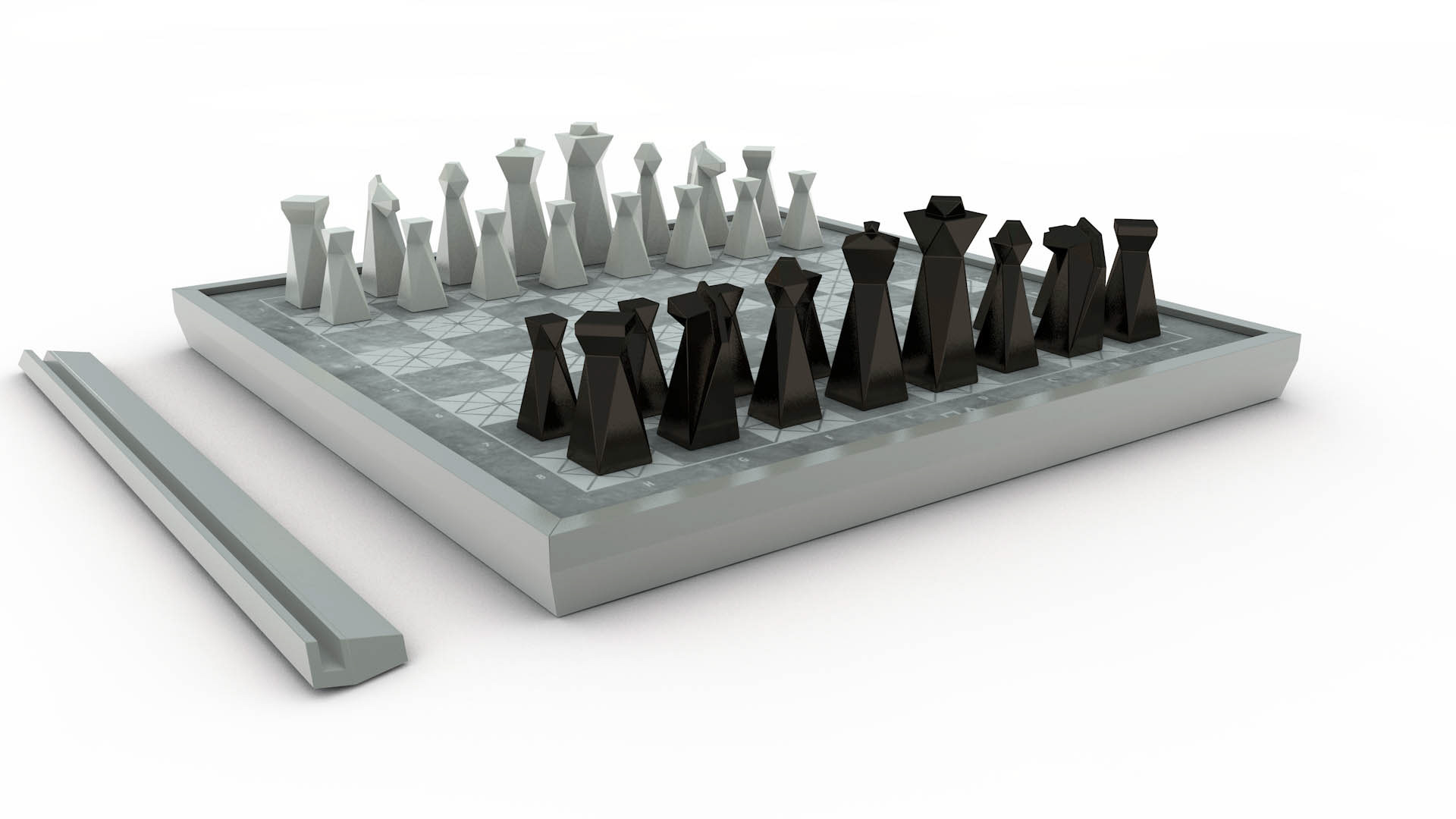
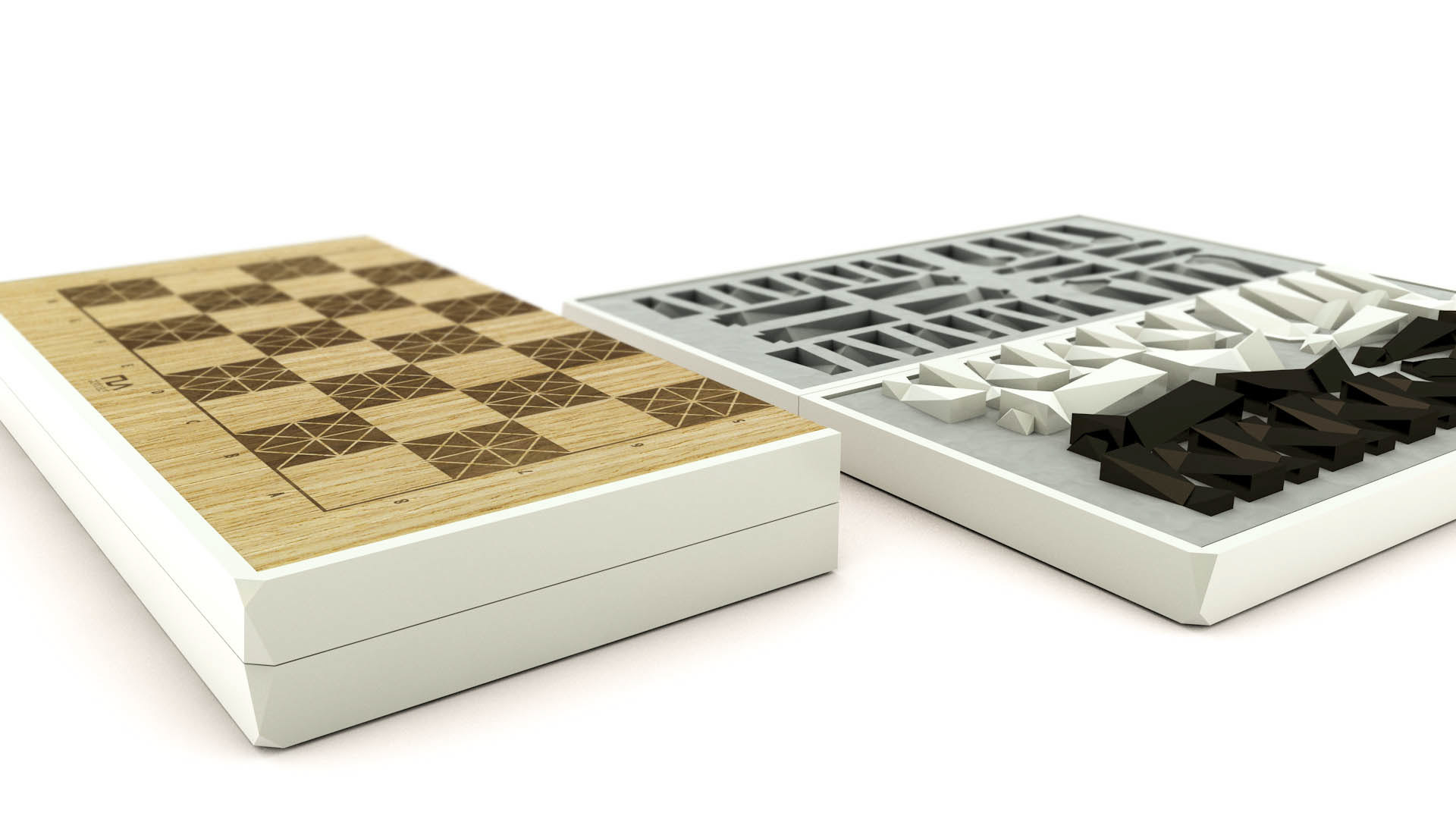
BRING ON THE Materials!
Then a few sets were made with silicone molds+resin to give to friends and receive feedback. I also started experimenting with different materials for chess pieces like concrete, plaster, polyurethane, epoxy, bronze, aluminum and wood. Even crayons! Some from silicone molds, some from sand casting and some from cnc machining. The best results came with cnc machined and polished aluminum, but the cost was too high.
The last photo is from a sand casted bronze prototype. Sand casting is a metal casting process by using special sand as the mold material. We tried aluminum and bronze pieces with this process. Aluminum pieces had the best weight but not good detail. Bronze pieces were too heavy but they looked amazing!
After trying all those materials, we saw that aluminum had the best weight, so I moved to the next step...
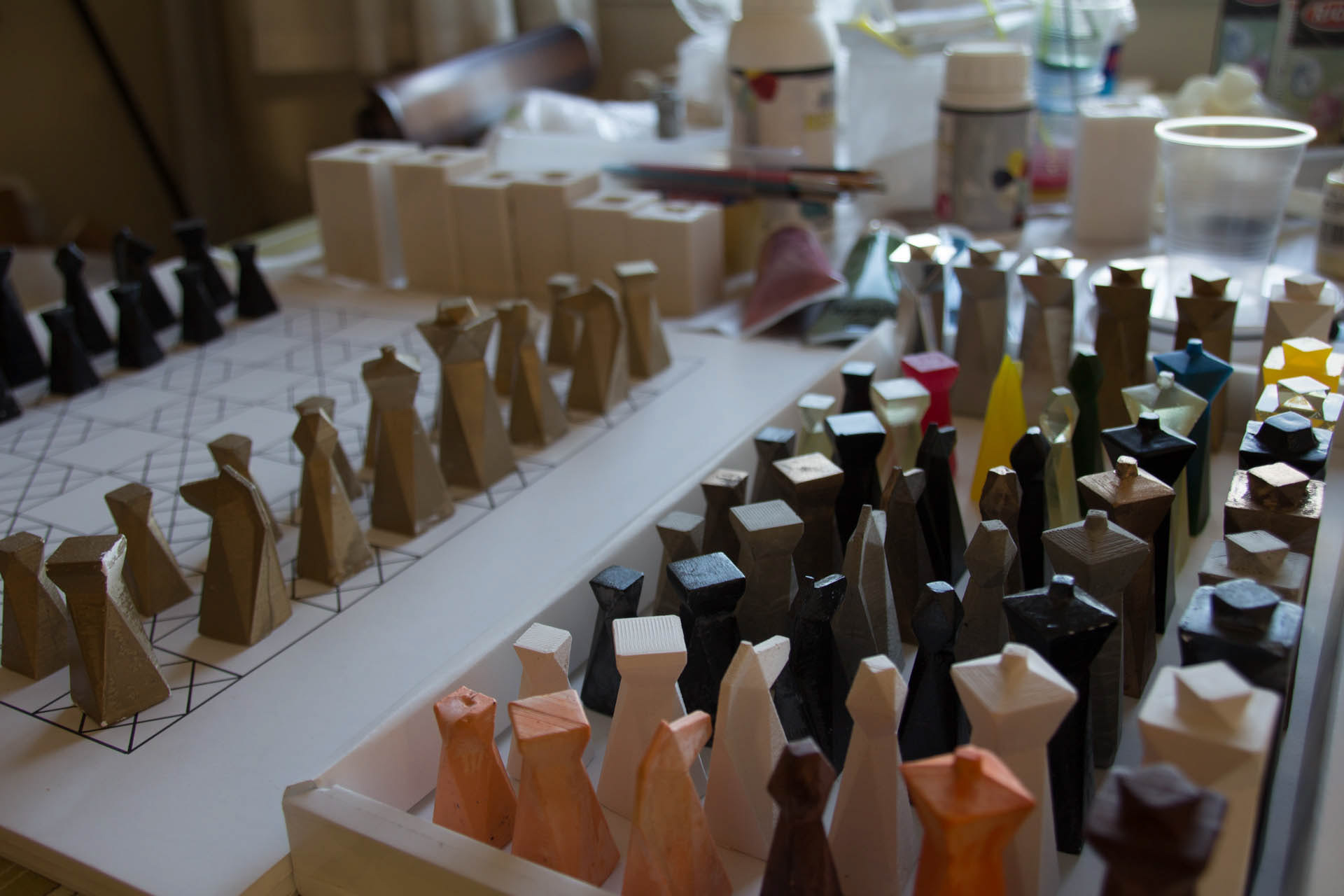
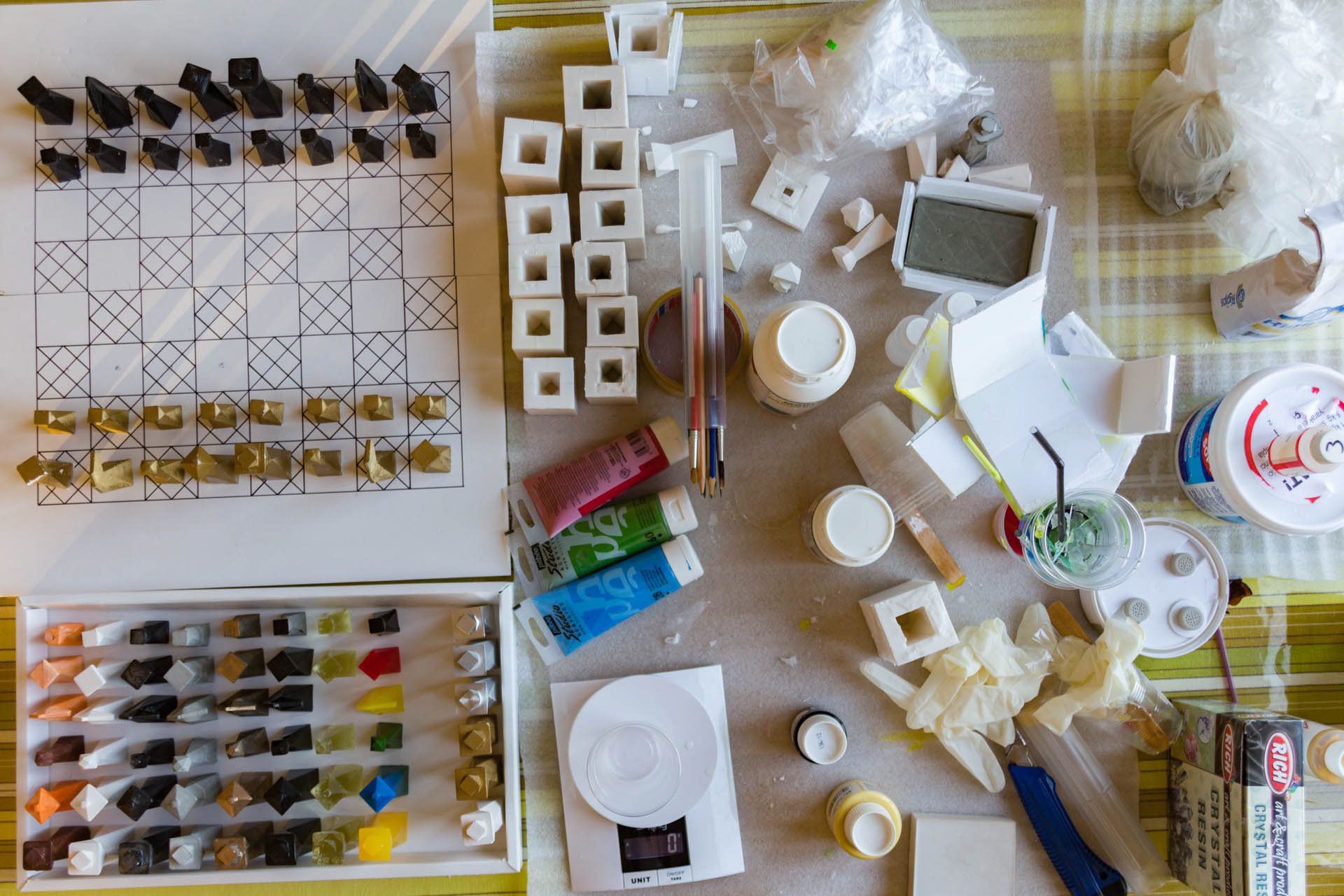
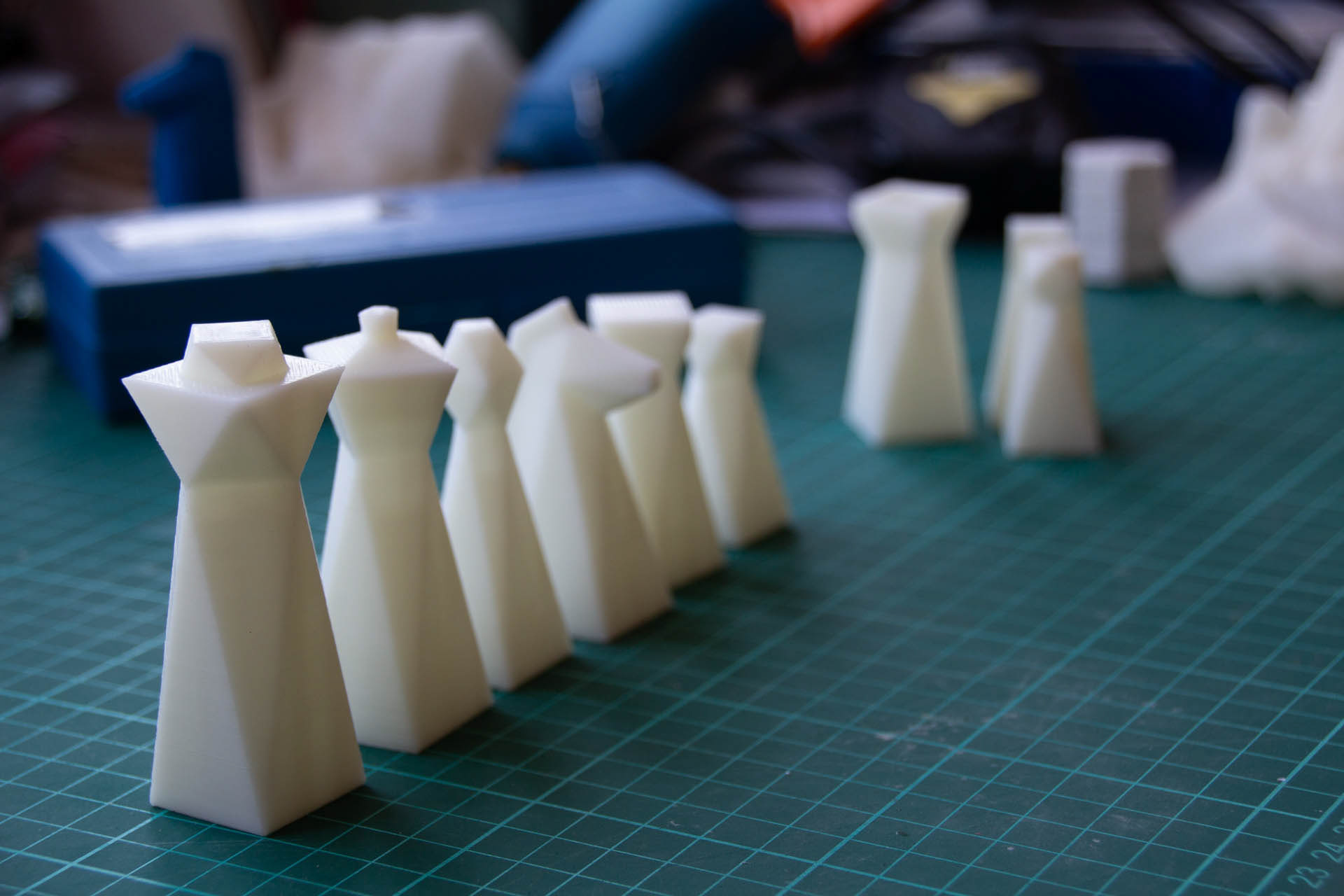
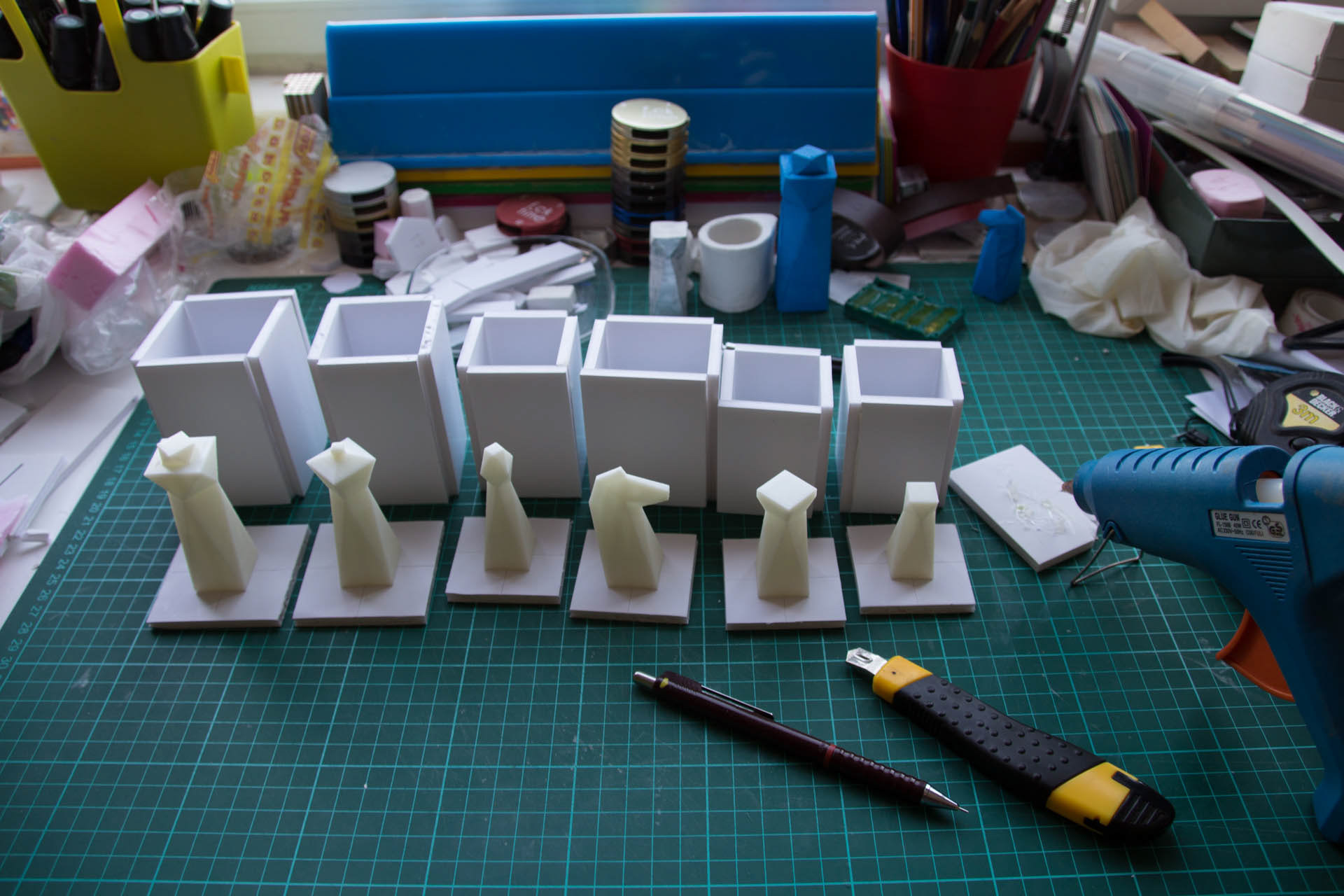


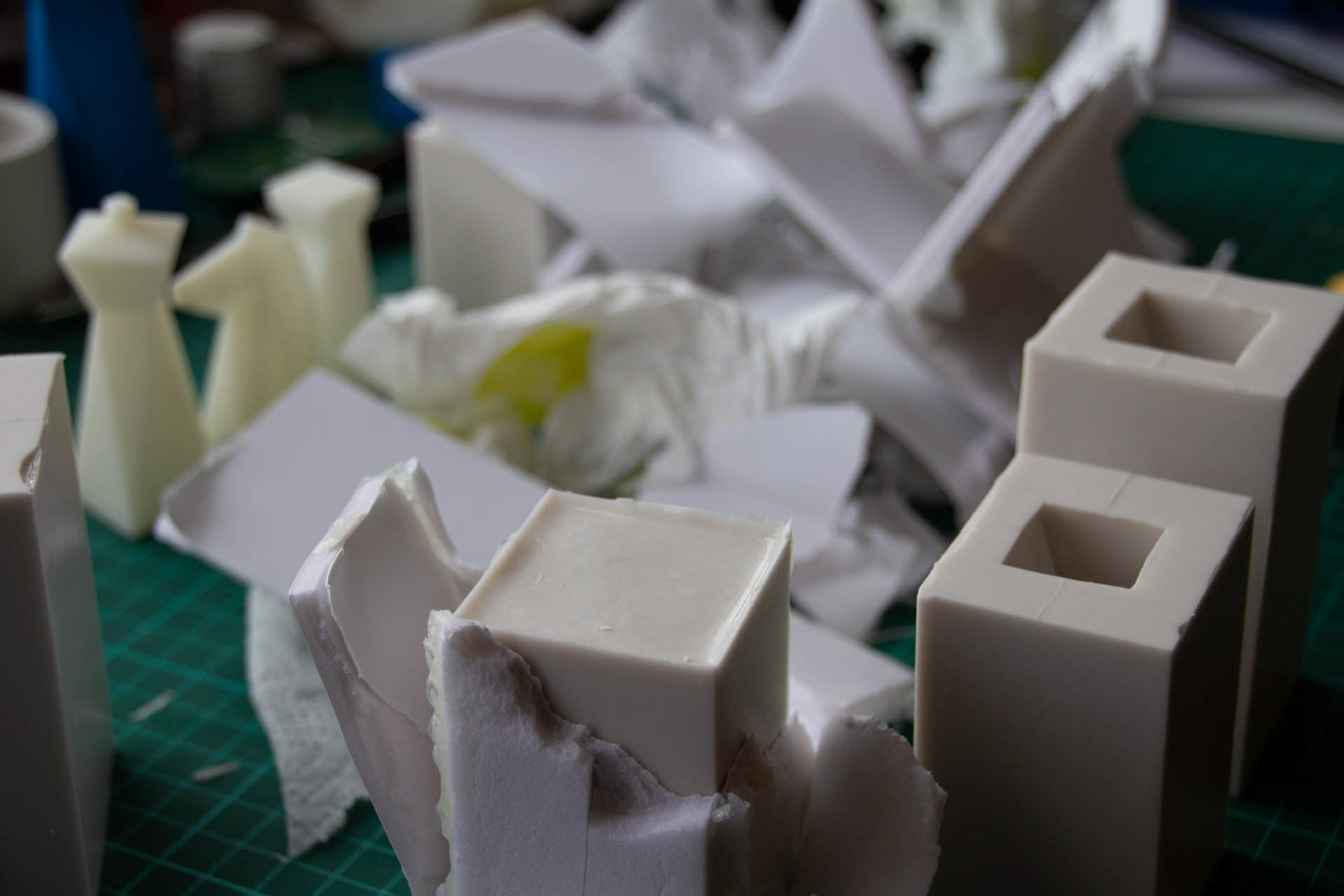
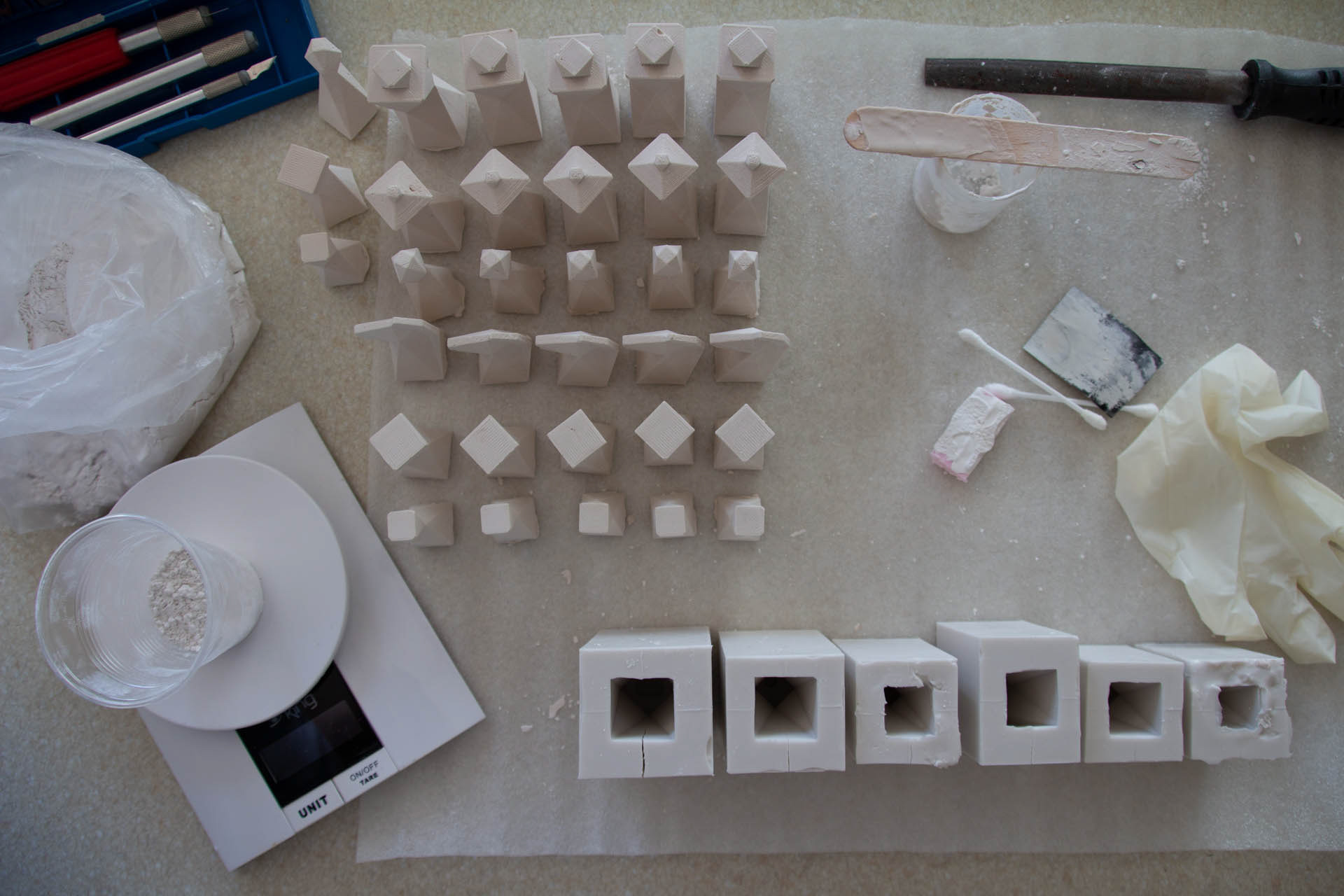

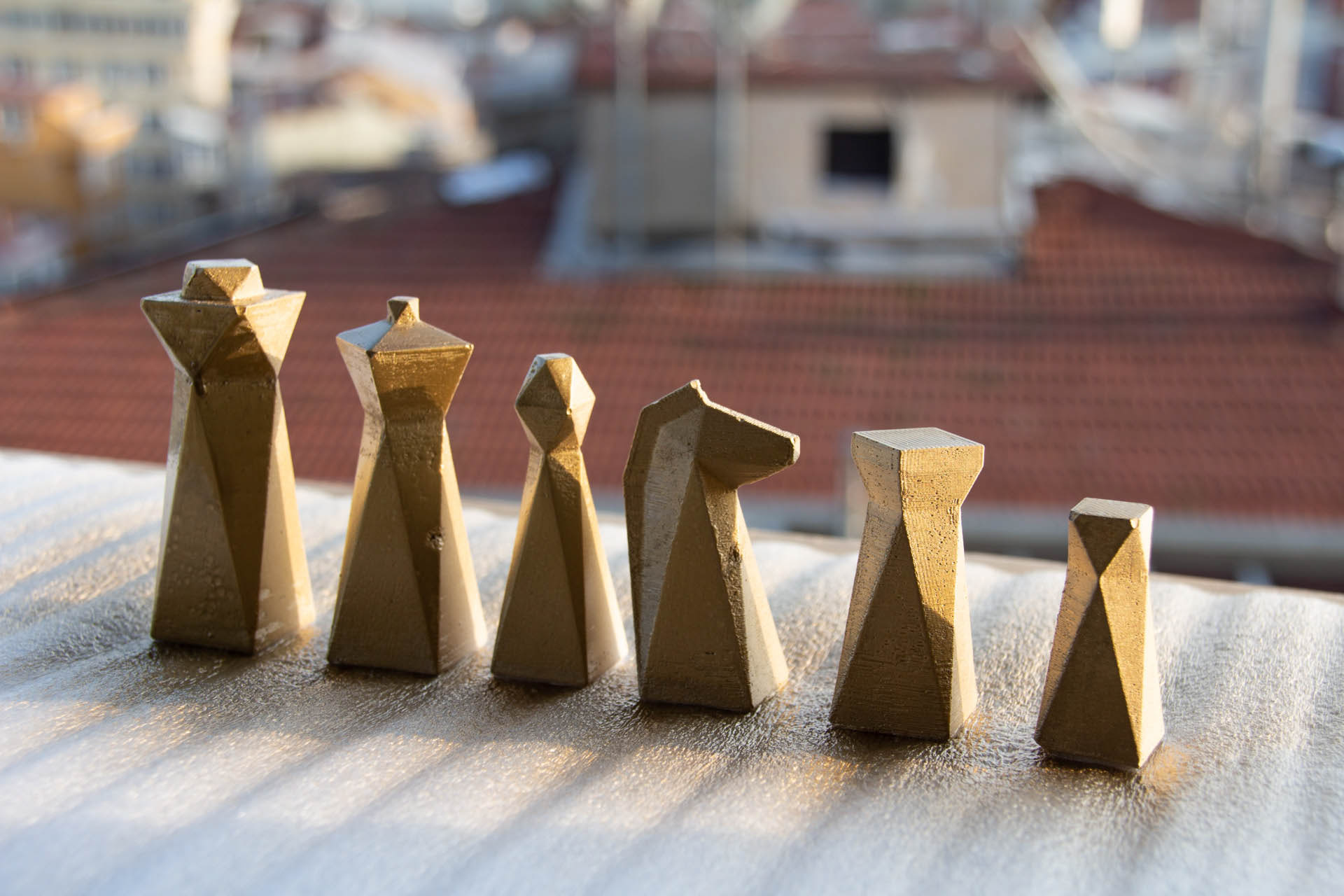
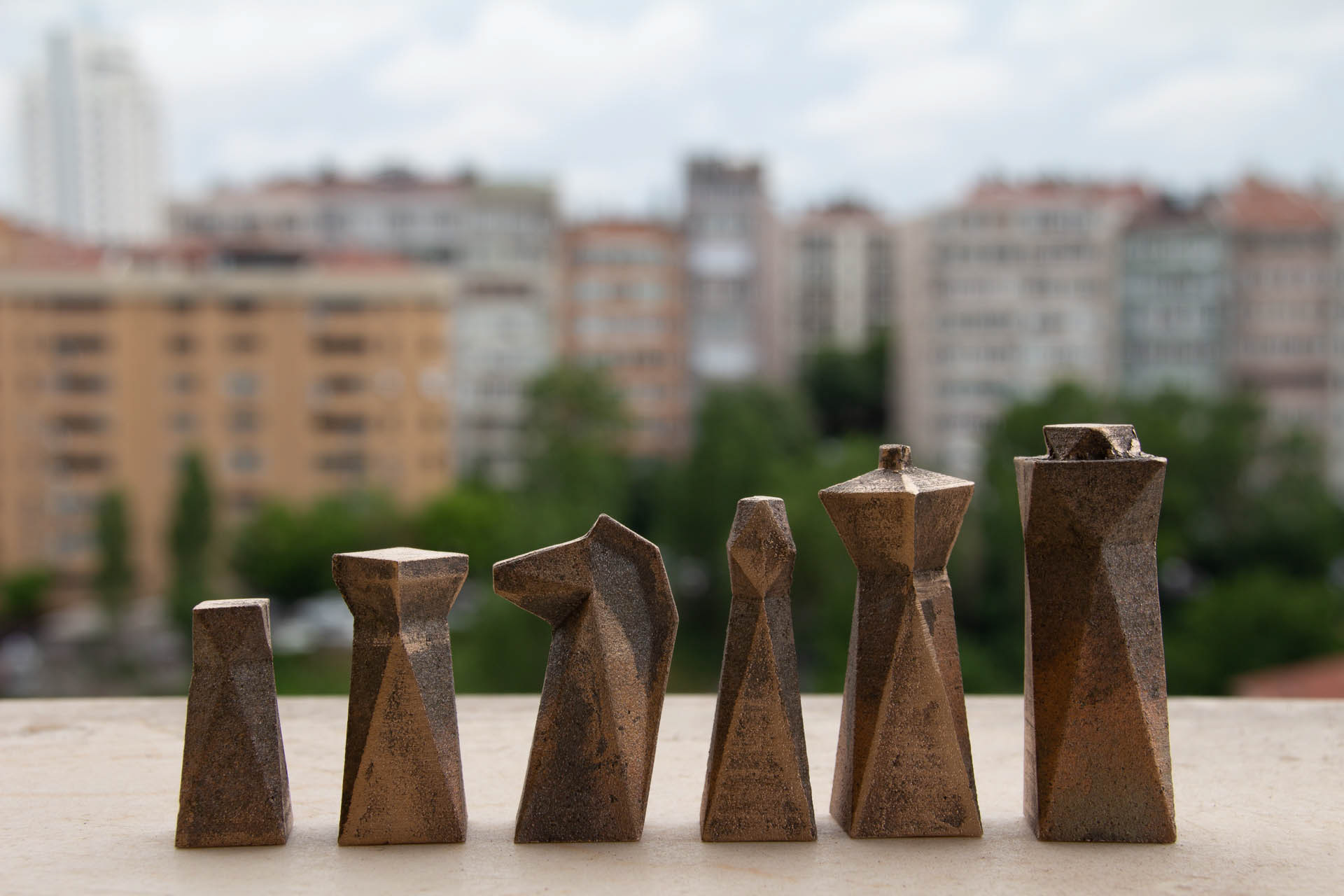
IS IT ALUMINUM OR ALUMINIUM?!
After we decided we wanted aluminum chess pieces because they had the best weight to them, we started trying different ways to make them out of aluminum. We already tried ‘sand casting’ and the surface finish was not that good. And it was slow. Of course the go-to process for aluminum is ‘cnc machining’ which is basically letting computer controlled machines carve the pieces out of a solid piece of aluminum. We tried that, the surface finish was perfect but cost per piece was way too high. So the next process we tried was ‘investment casting’. On these photos I'm making wax replicas of the chess pieces by melting and pouring them in silicone molds.
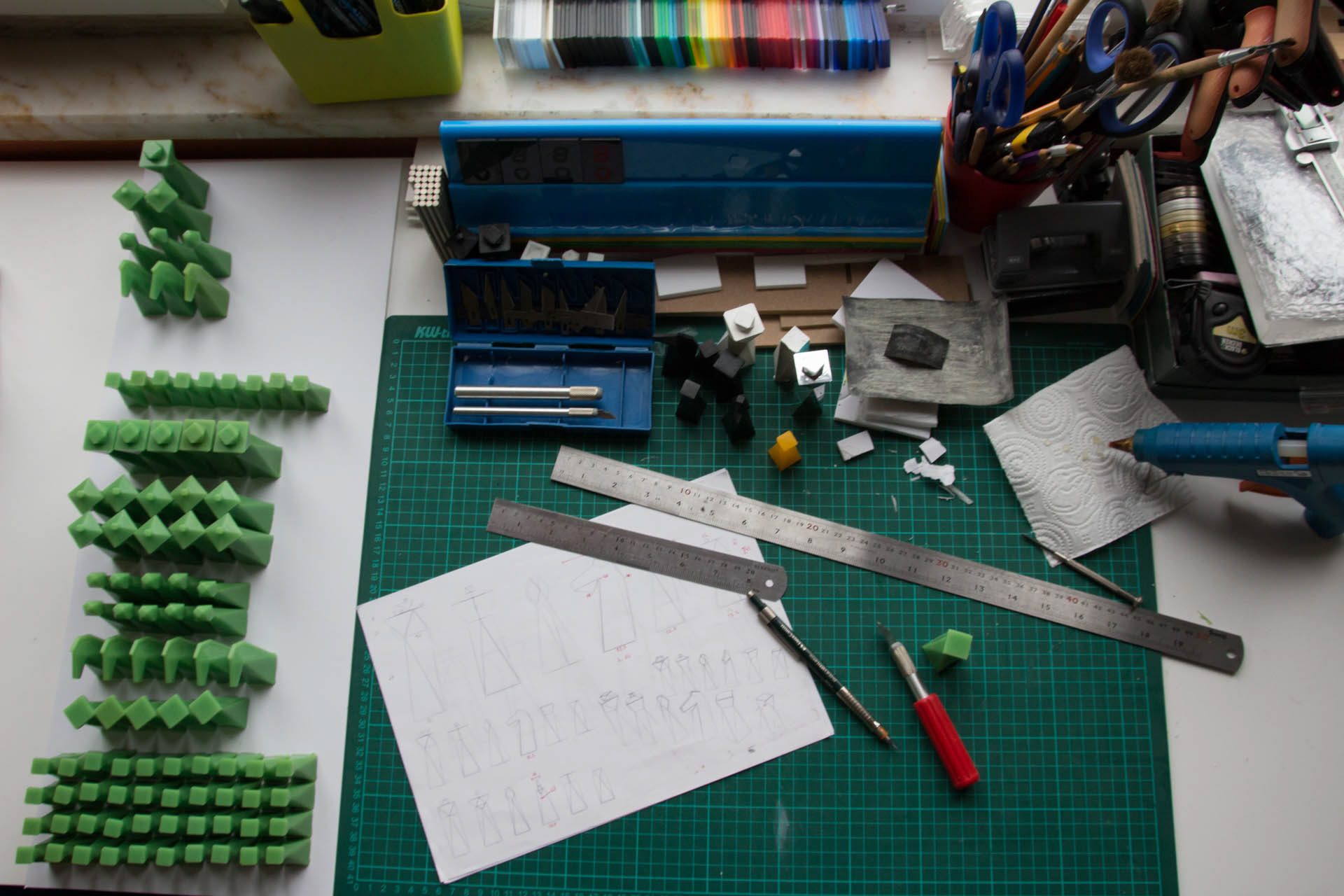
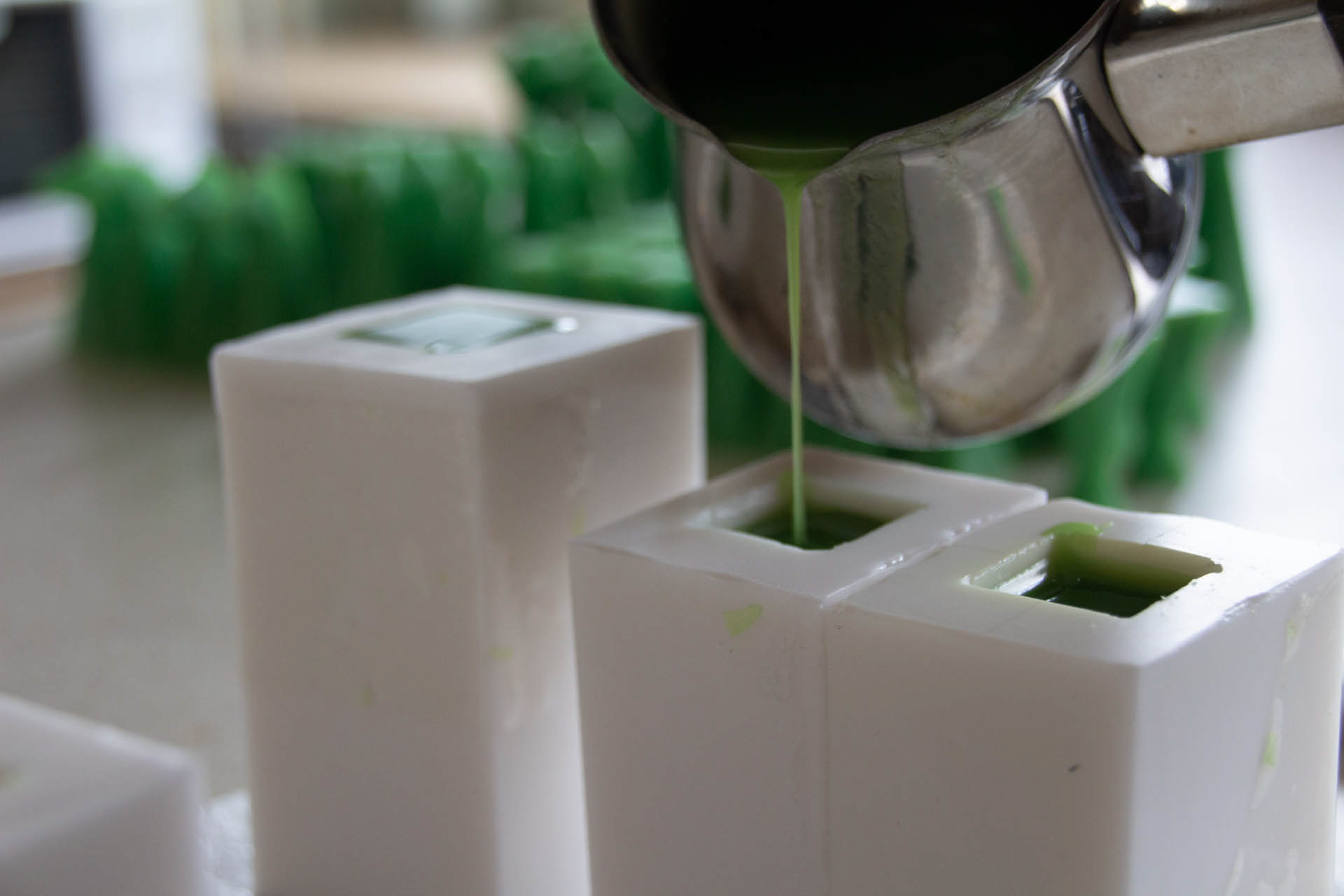
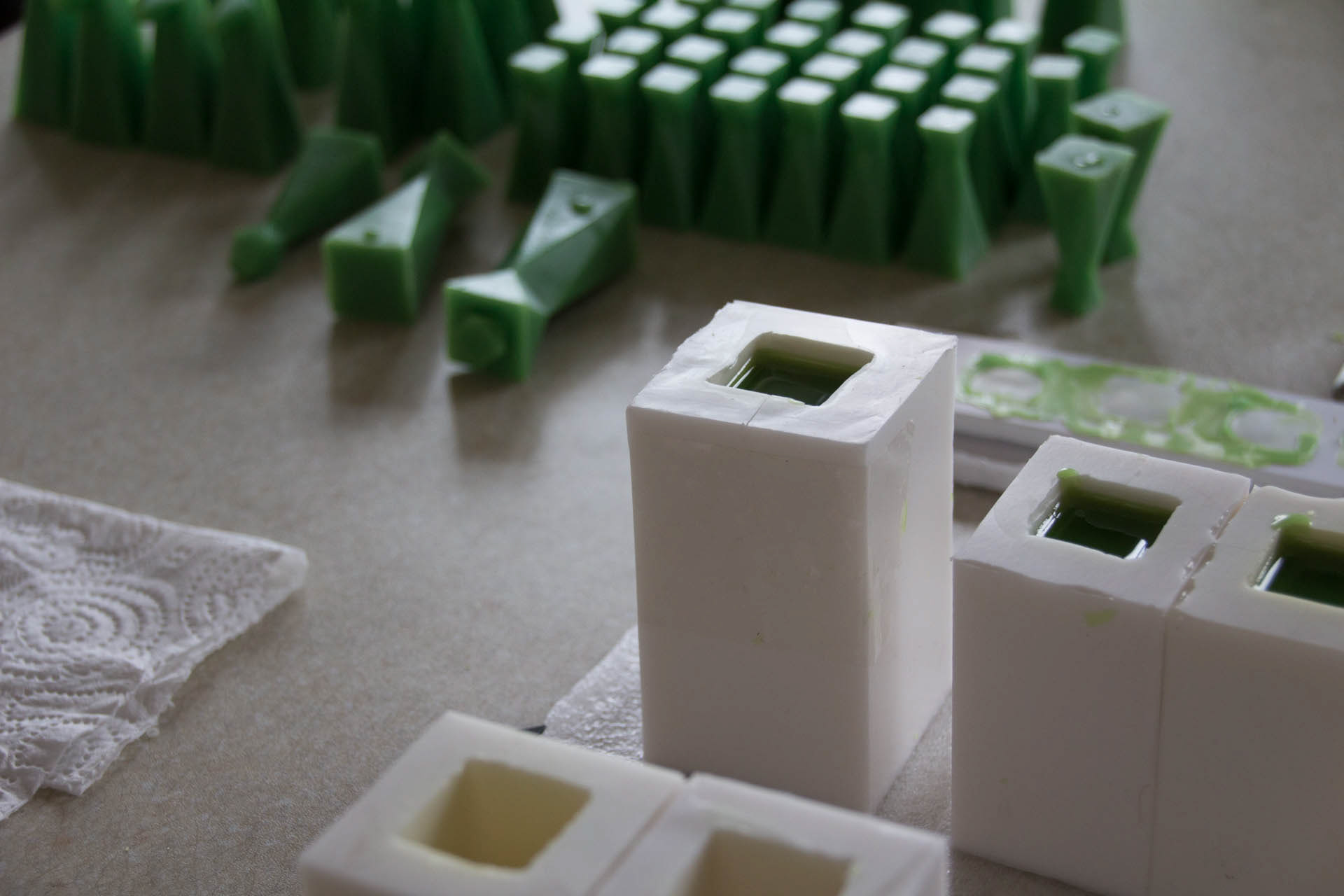
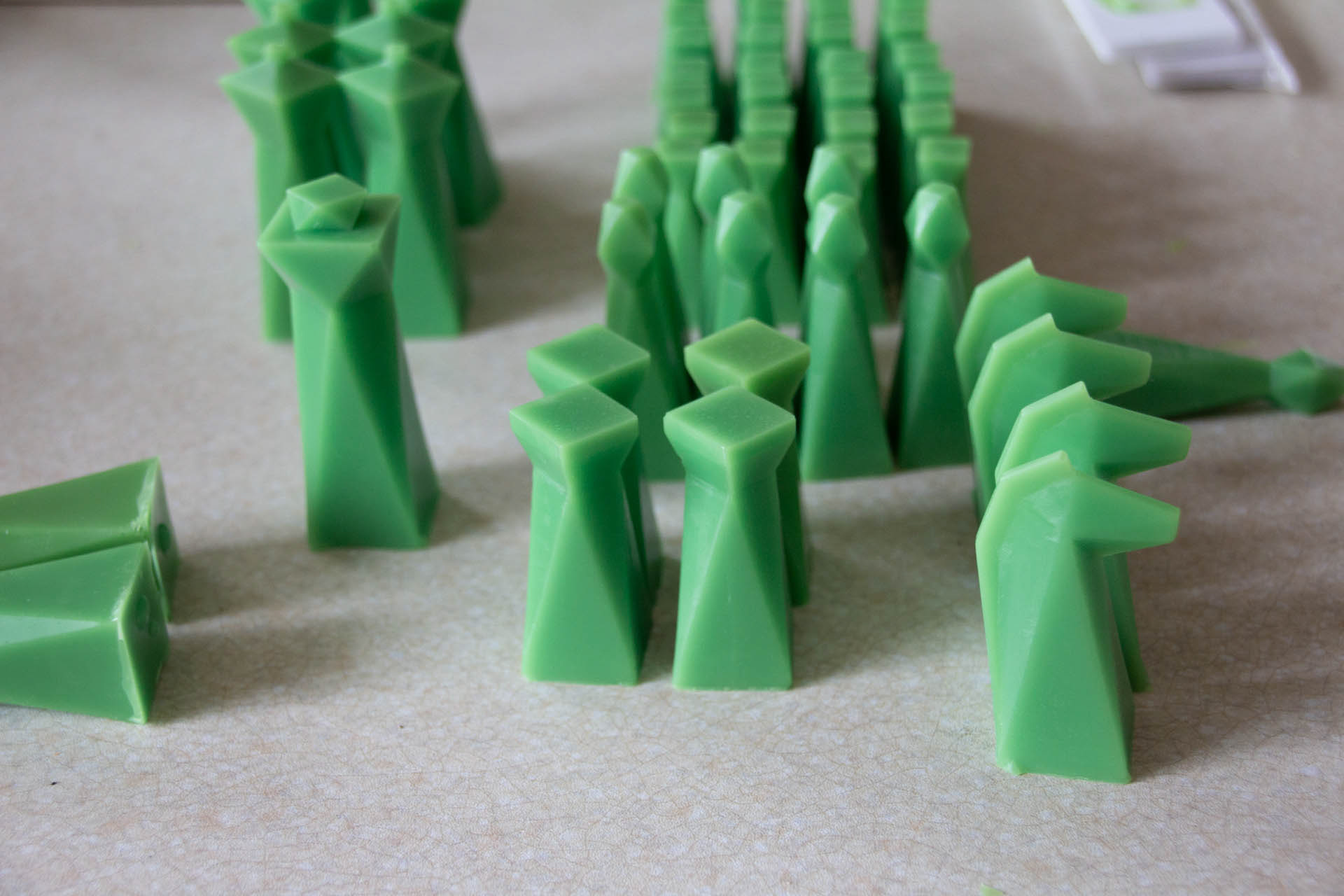
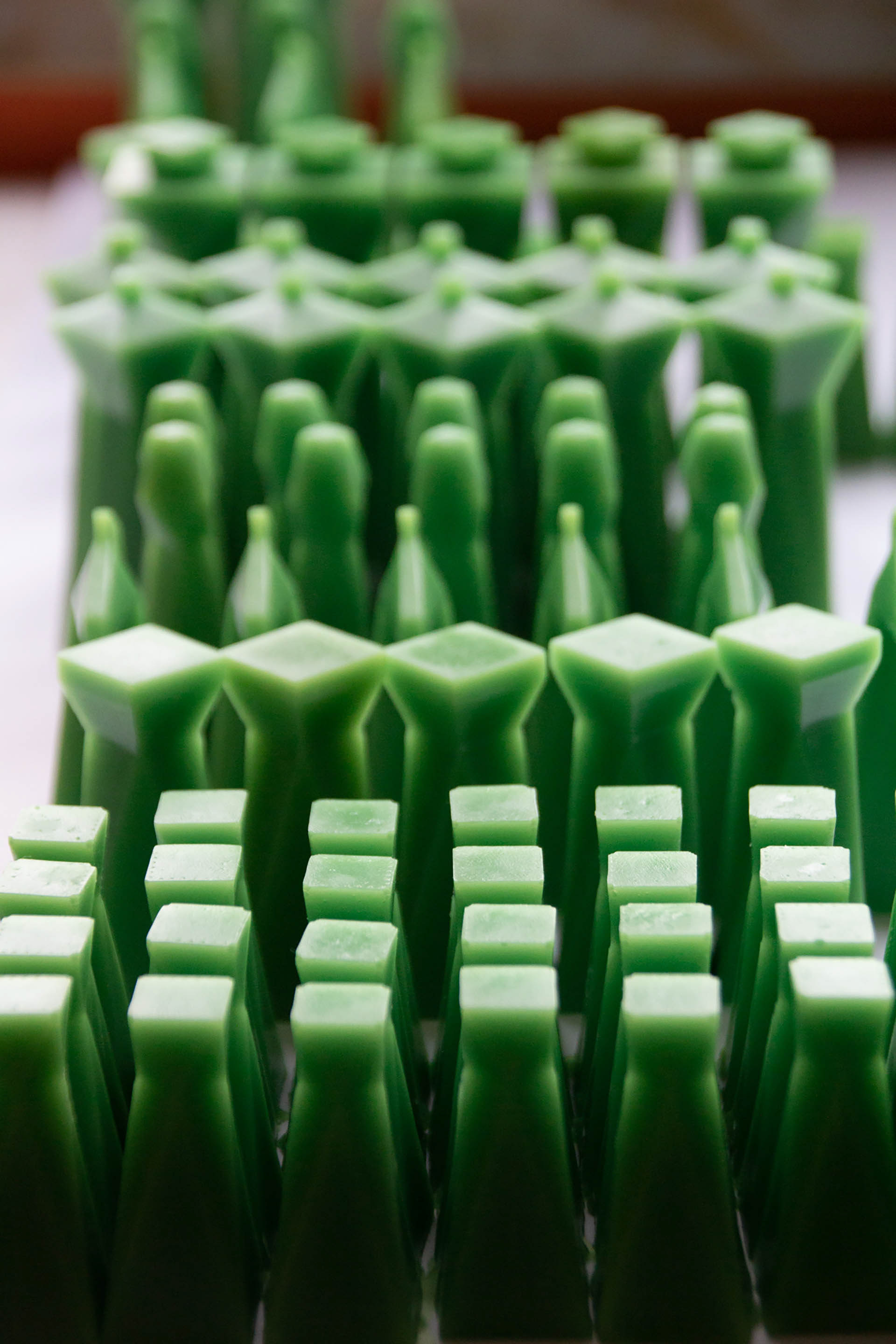
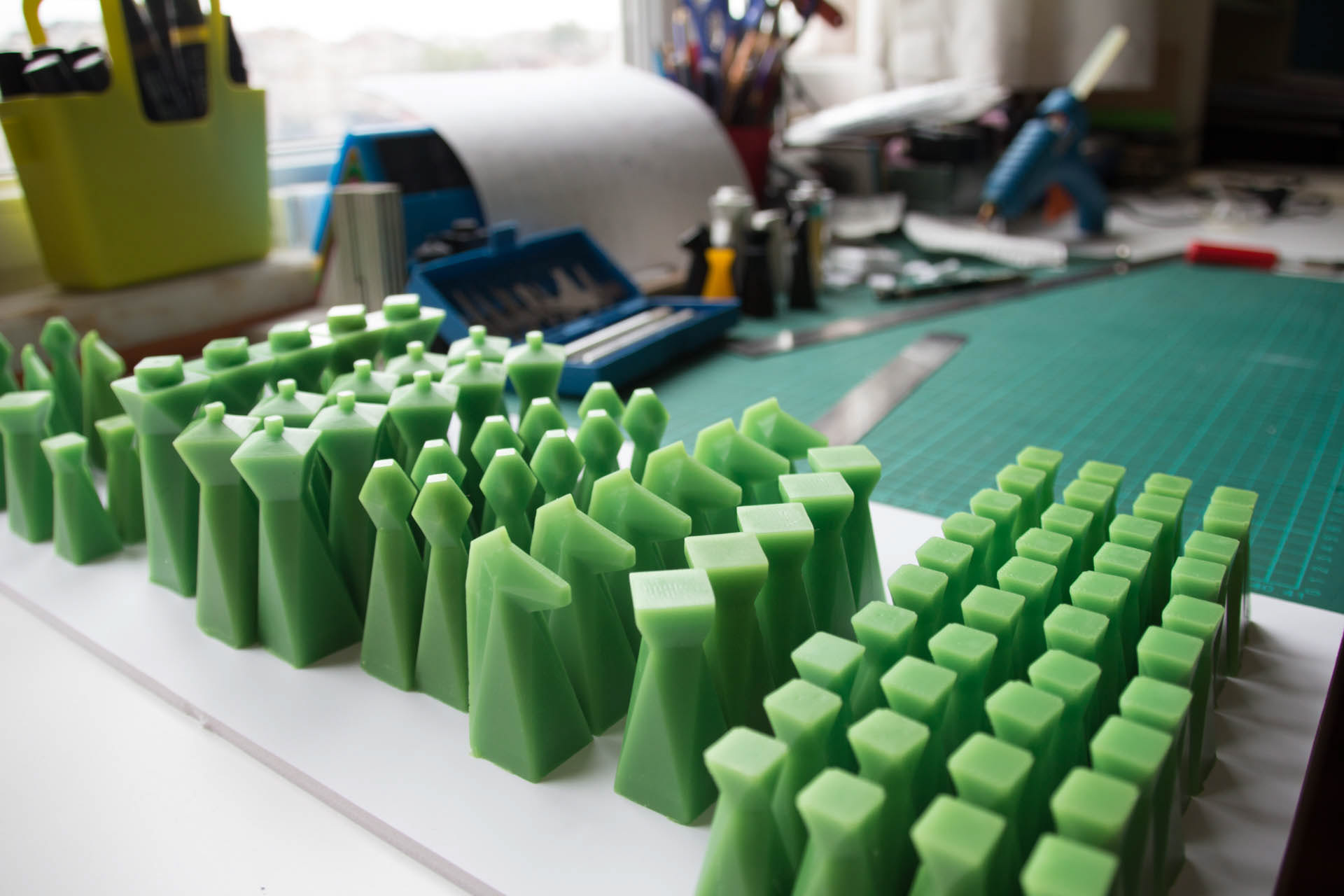

CHRISTMAS TREE OUT OF WAX CHESS PIECES
Investment casting is a manufacturing process that allows the casting of extremely complex parts, with good surface finish. Normally wax replicas are made with injection molding, but since we were just prototyping, I used pots to melt the wax and poured them into silicone molds. After that we made wax branches and trees with lots of pieces. The wax tree is then dipped in a refractory slurry whose composition includes extremely fine grained silica, water and binders. A ceramic layer is obtained over the surface of the tree. The tree is then repeatedly dipped into the slurry to increase the thickness of the ceramic coat. Then the hardened ceramic mold is turned upside down and heated to a temperature of around 200F-375F (90C-175C). This causes the wax to flow out of the mold, leaving the cavity for the metal casting. After pouring of the molten metal into the mold, the casting is allowed to set as the solidification process takes place. The final step in this manufacturing process involves breaking the ceramic mold from the investment casting and cutting the parts from the tree. After you break the molds and release the aluminum pieces, there are still a few finishing processes that you have to do like sanding, polishing, painting, etc. We did a few sets and played with them for a while to see how they felt.

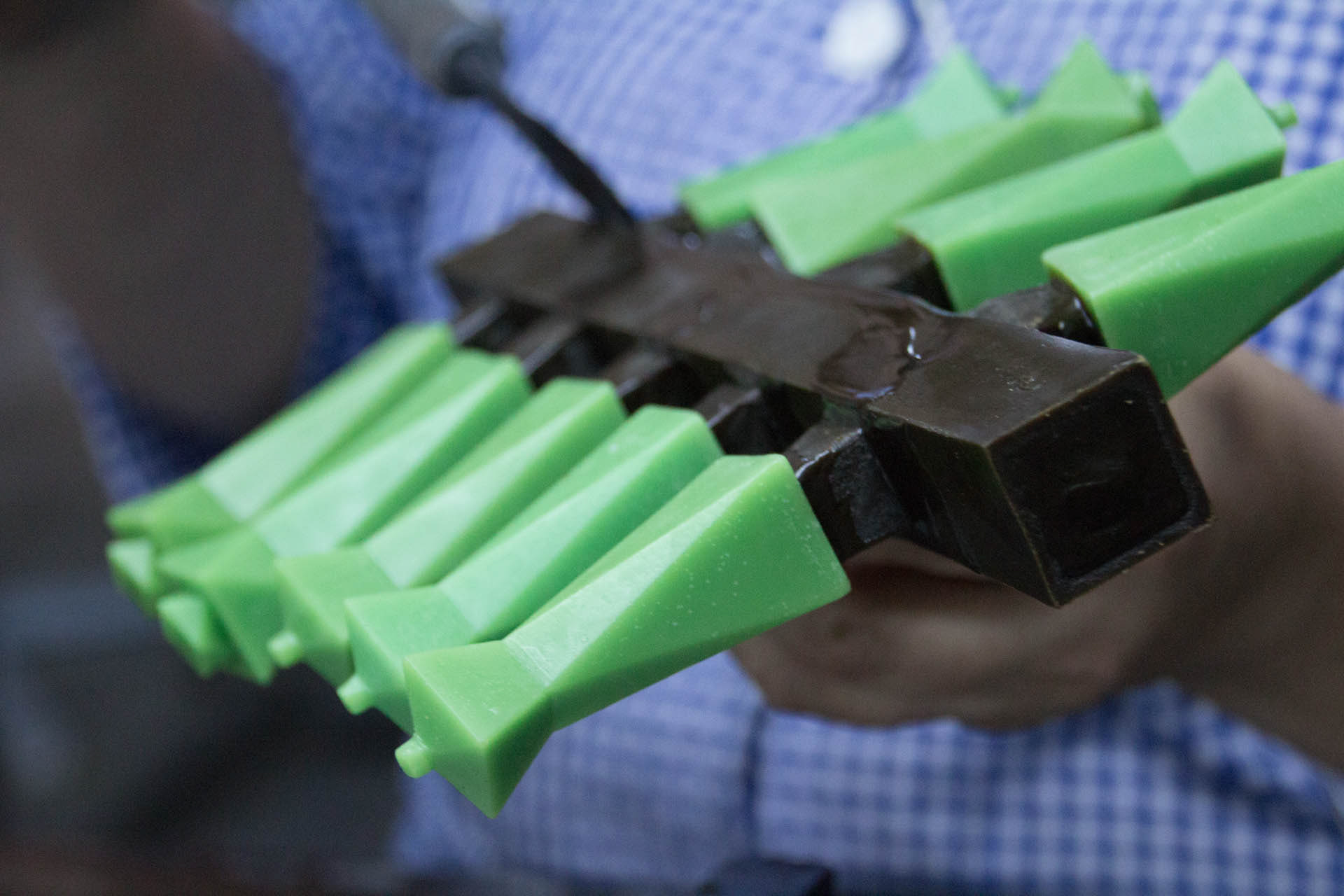
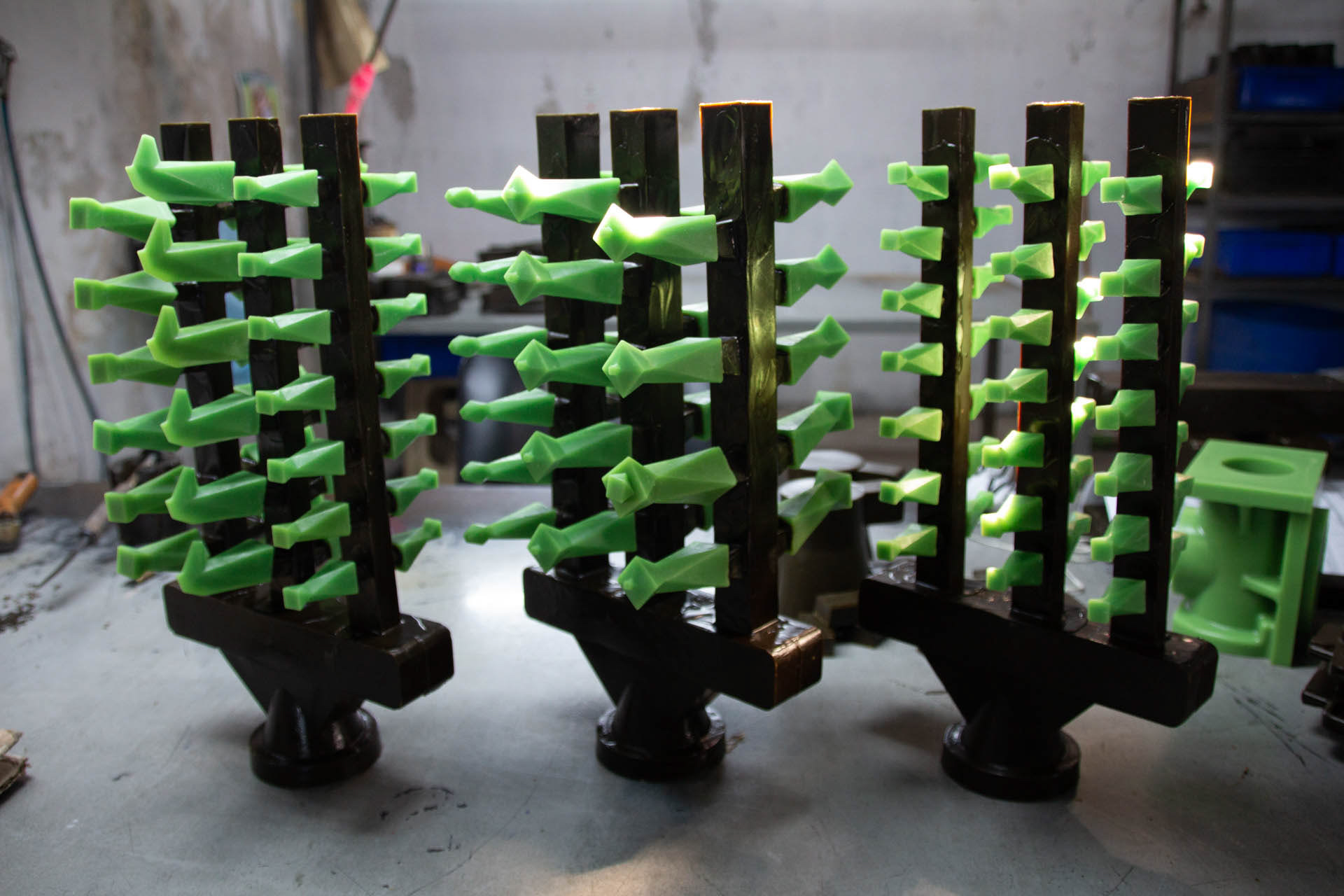
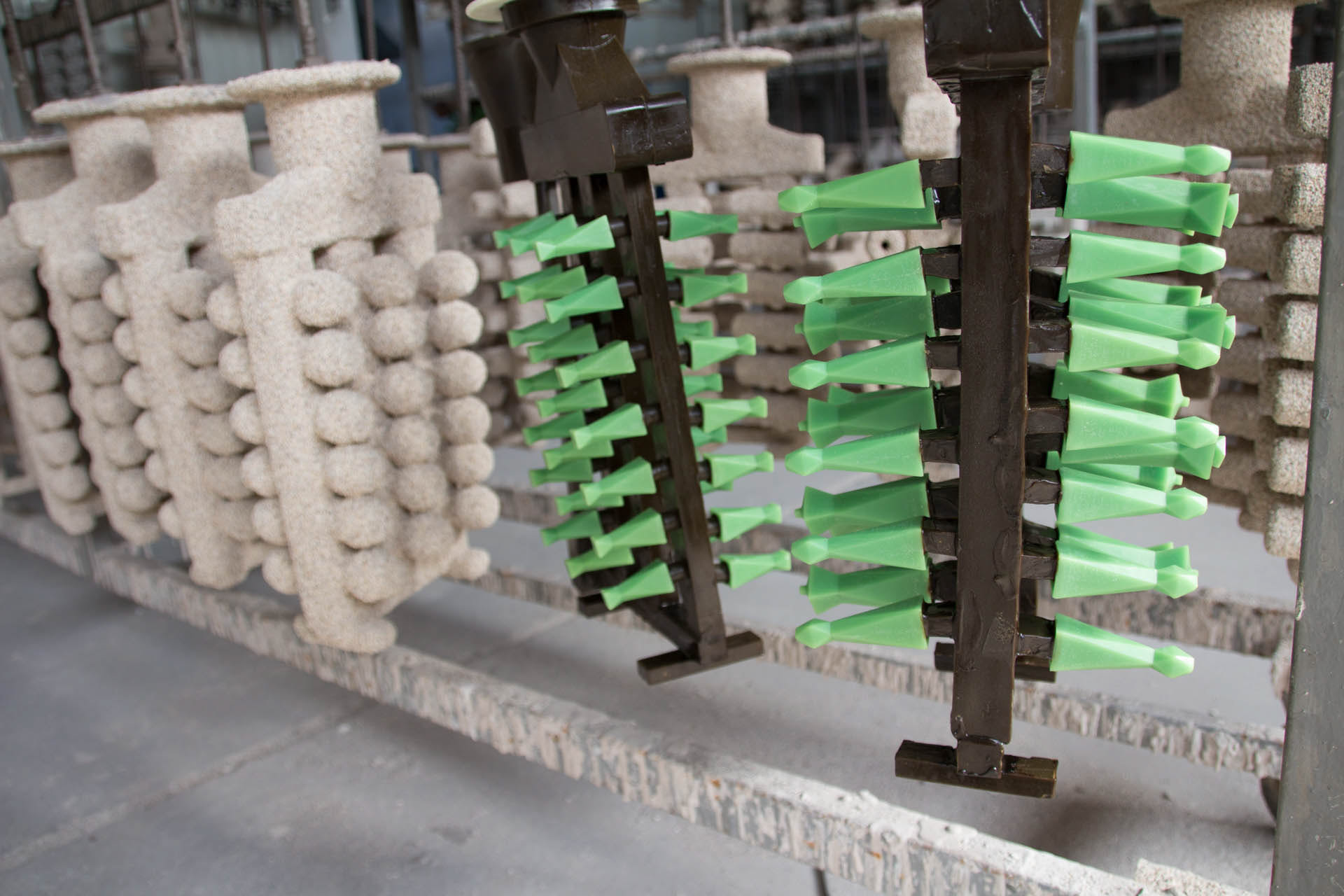

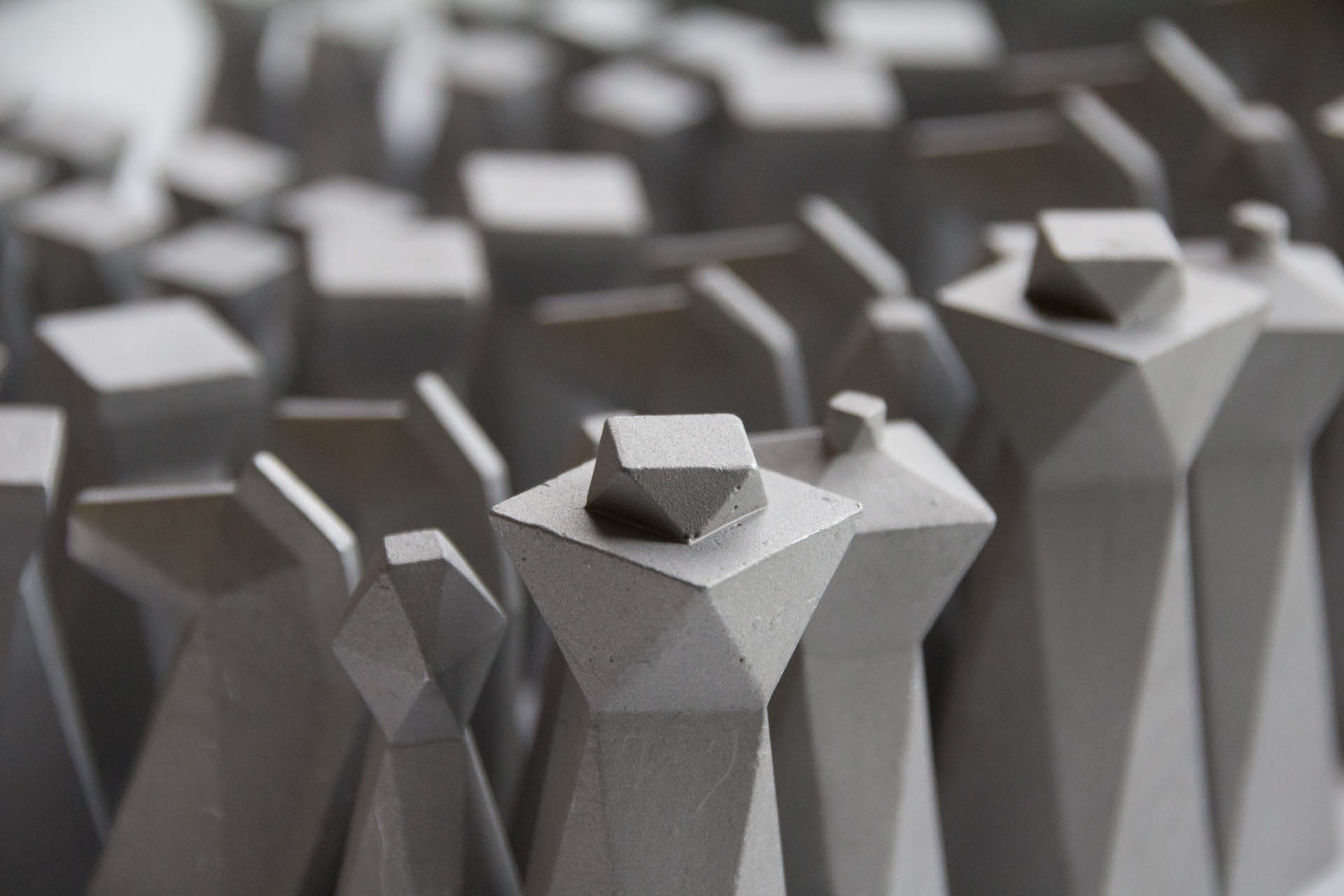
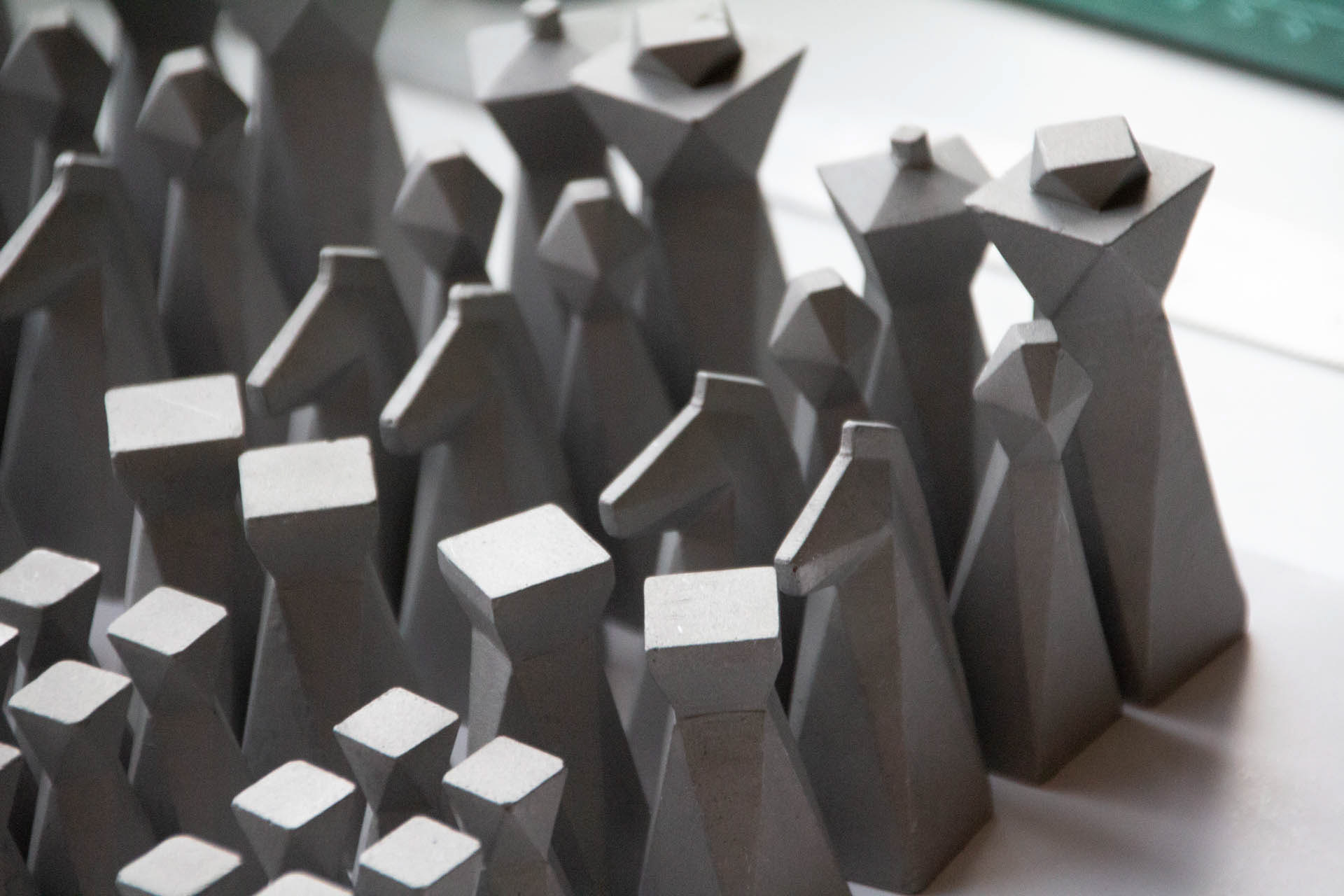
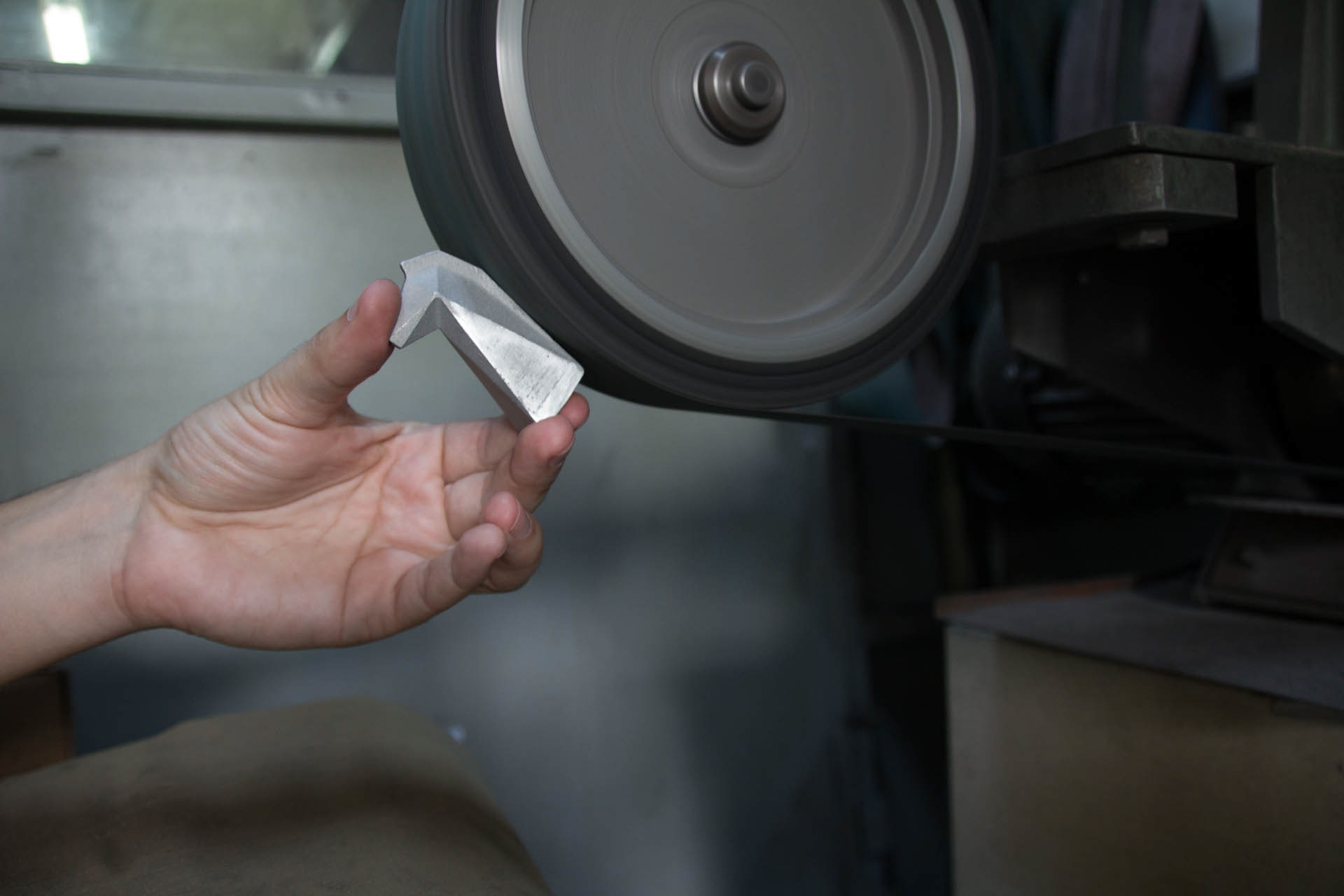
ABRACADABRA! THE WEIGHTS ARE GONE!
Investment casted aluminum pieces look and feel great but to make thousands of these pieces, you really have to invest -wink wink- in tooling for injection molding so you don't have to hand cast wax, hand sand and polish. Not ready to make that investment yet, we went back to resin for material. Aluminum pieces had the perfect weight but resin casted pieces were very light. I tried using fishing weights but if you put the weights after you cast the pieces, the weight or the filler is exposed at the bottom. I spent months of ideating, prototyping and testing to find a way to put these weights inside the pieces during casting process. I came up with the idea of making molds of T shaped custom designed pieces and casting the weights in those molds first. Then when we put those T shaped pieces (same color with the pieces) on the final chess piece molds, the fishing weights suspend in the middle of the mold. The liquid resin covers and cures over it. But now you have a piece with a weird shape under it. We had to cut or sand the bottom of the pieces anyway (because you can't get perfect bottom finishes with hand casting), so I made 3D printed jigs to hold the pieces perpendicular to the band saw blade. Now when you look and feel from outside, you can't see the fishing weight, the pieces look all resin, but they have hidden weights inside. All this trouble to get a resin piece with the weight of an aluminum piece but it's worth it!

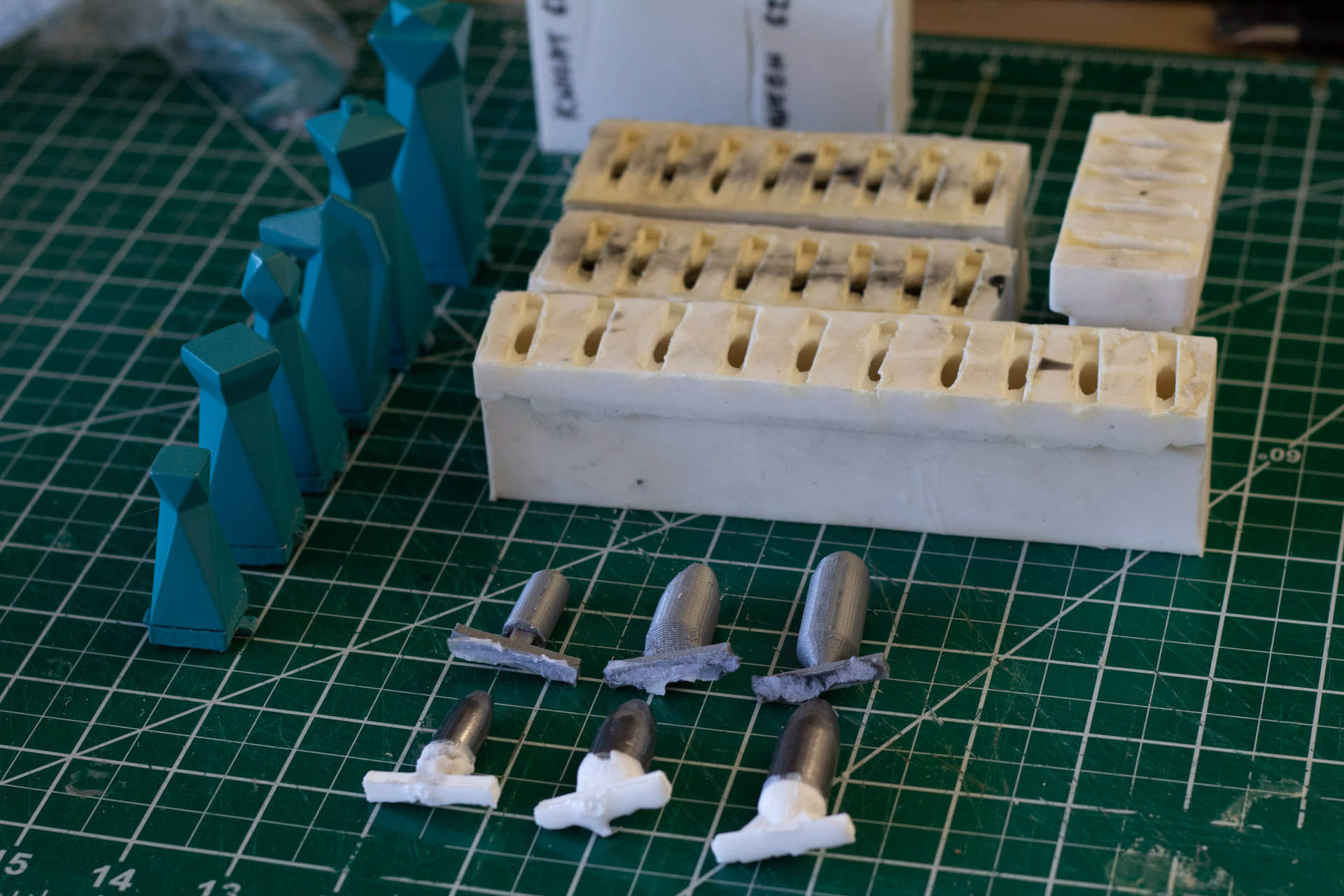
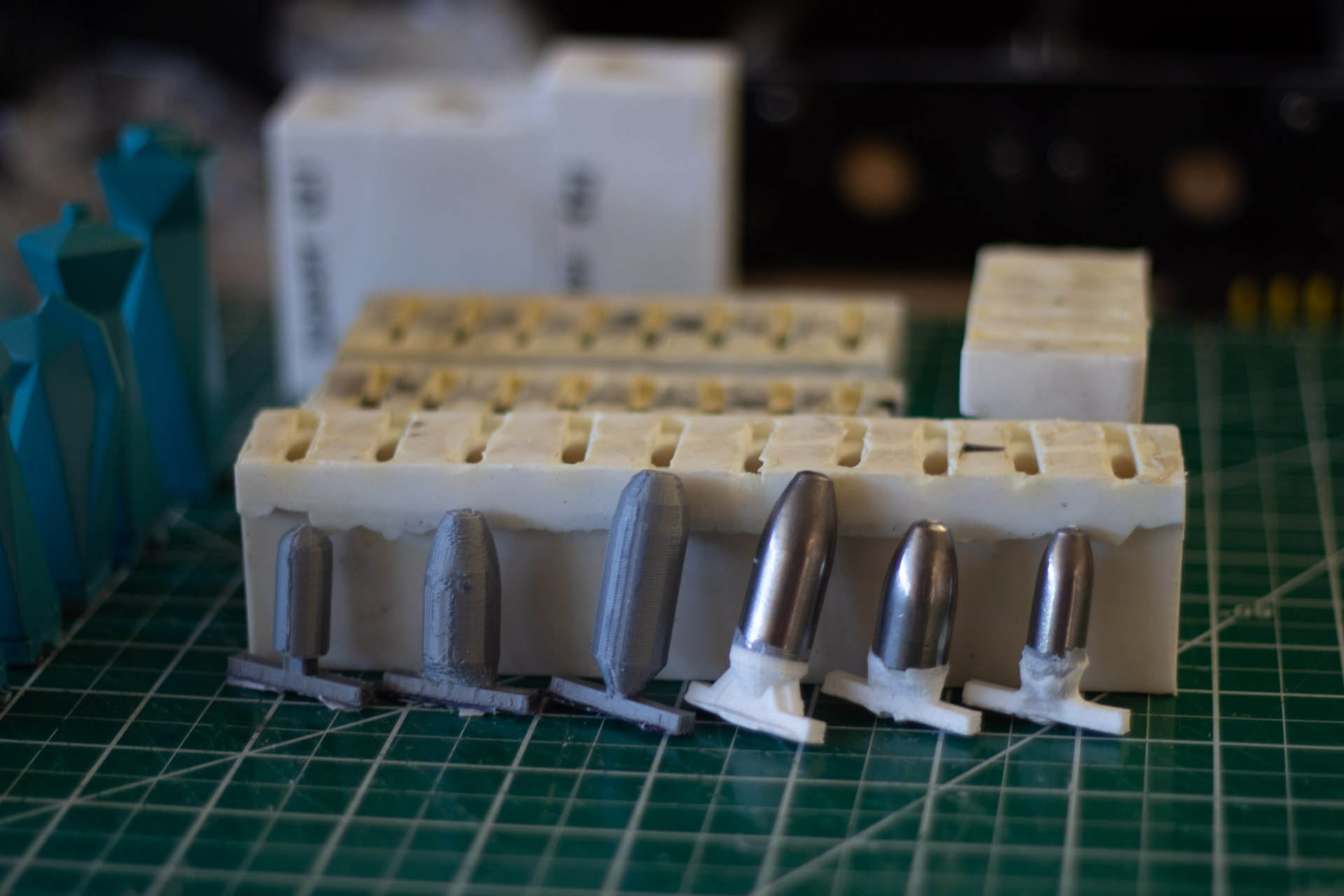
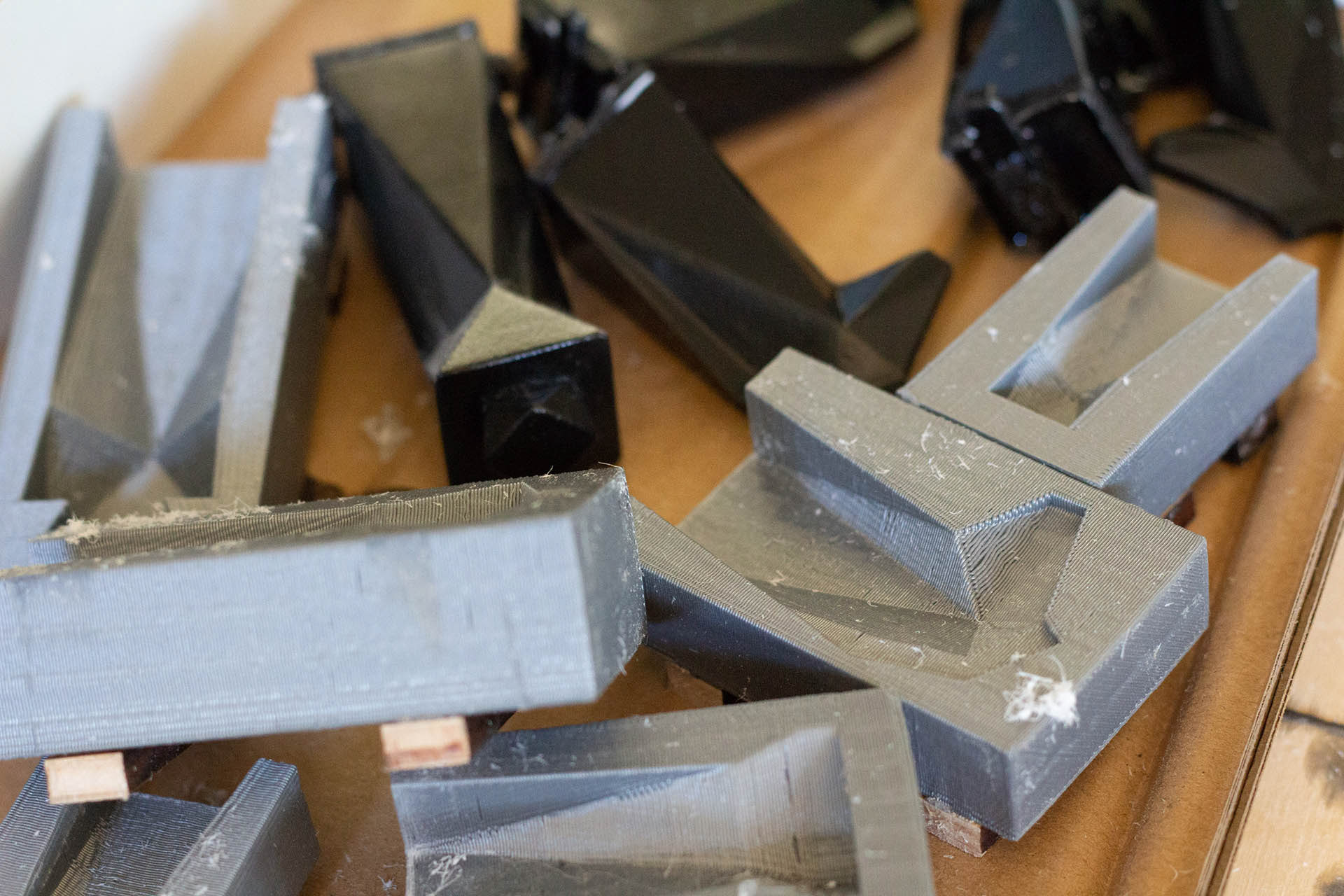


a detailed video of making the chess pieces
CHESSBOARD WAS EASIER
The chessboard design was easier than the pieces. For the first collection I chose two marble and two wood+resin boards. For black marble we used Nero Marquina from Spain and for gray marble we used Bianco Carrara from Italy. For the other two, the frame is constructed of resin with mdf hidden inside and white oak or walnut veneer on top. All chessboards are laser engraved with a polygonal texture to compliment the look of the chess pieces.
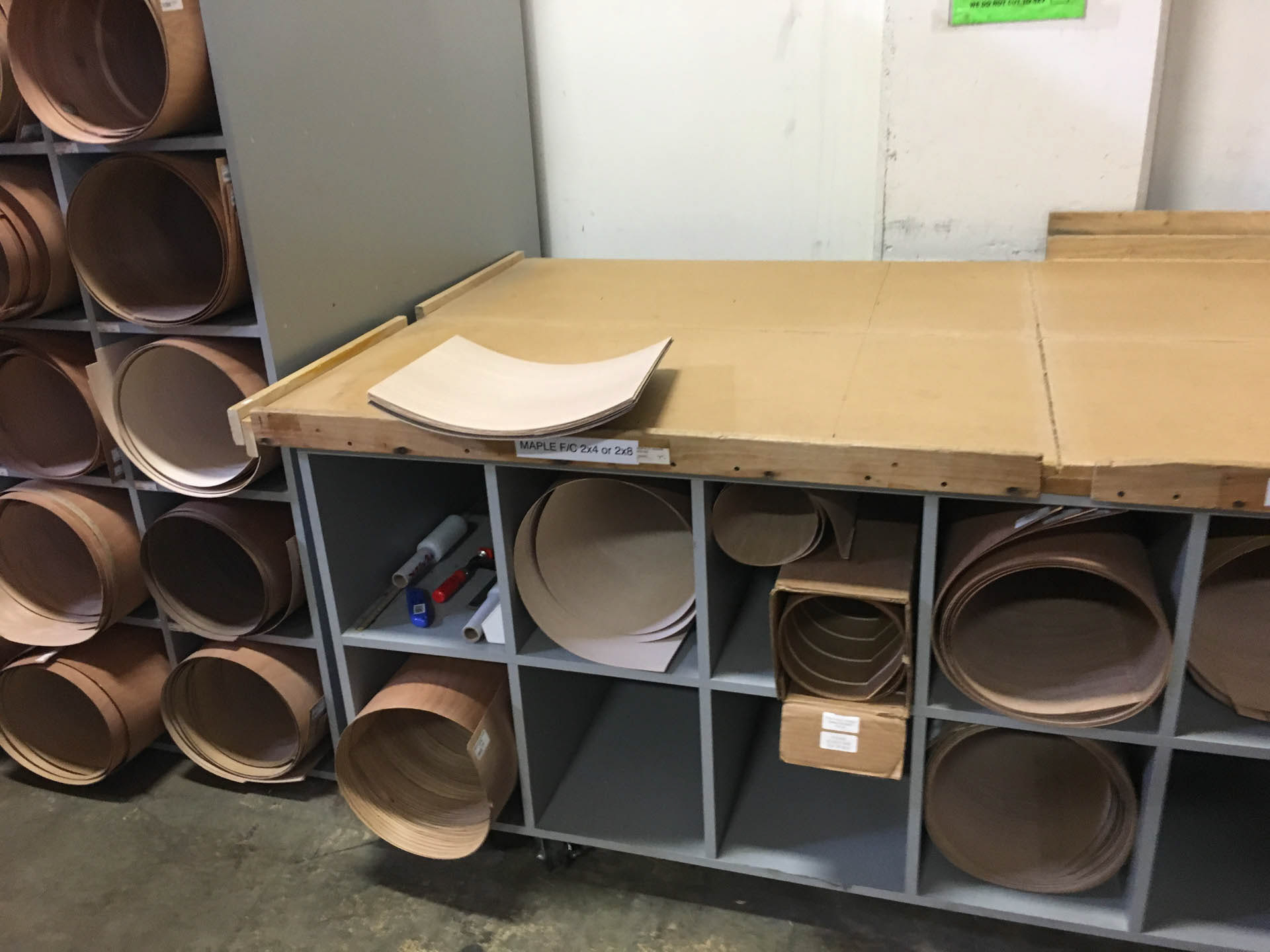
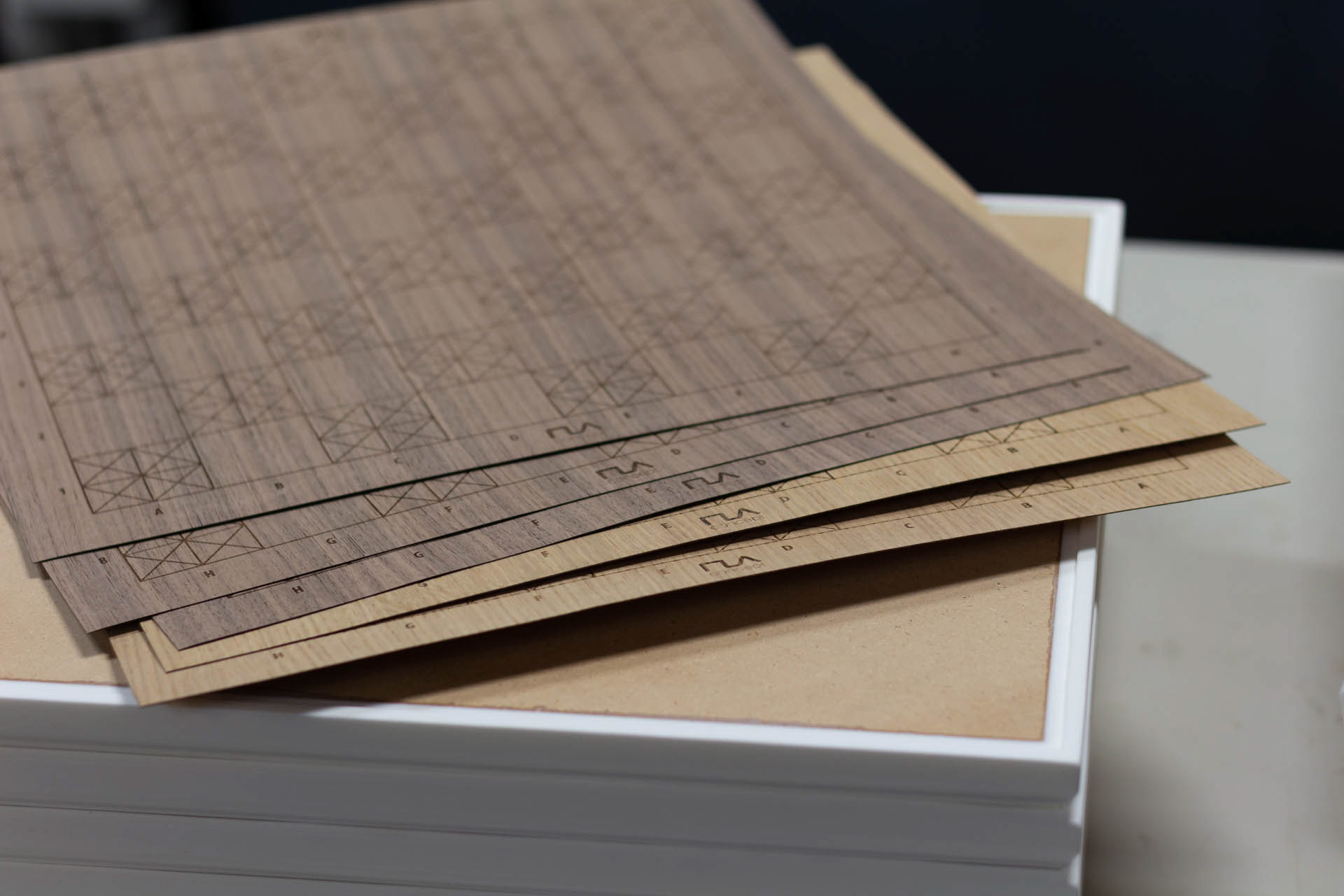
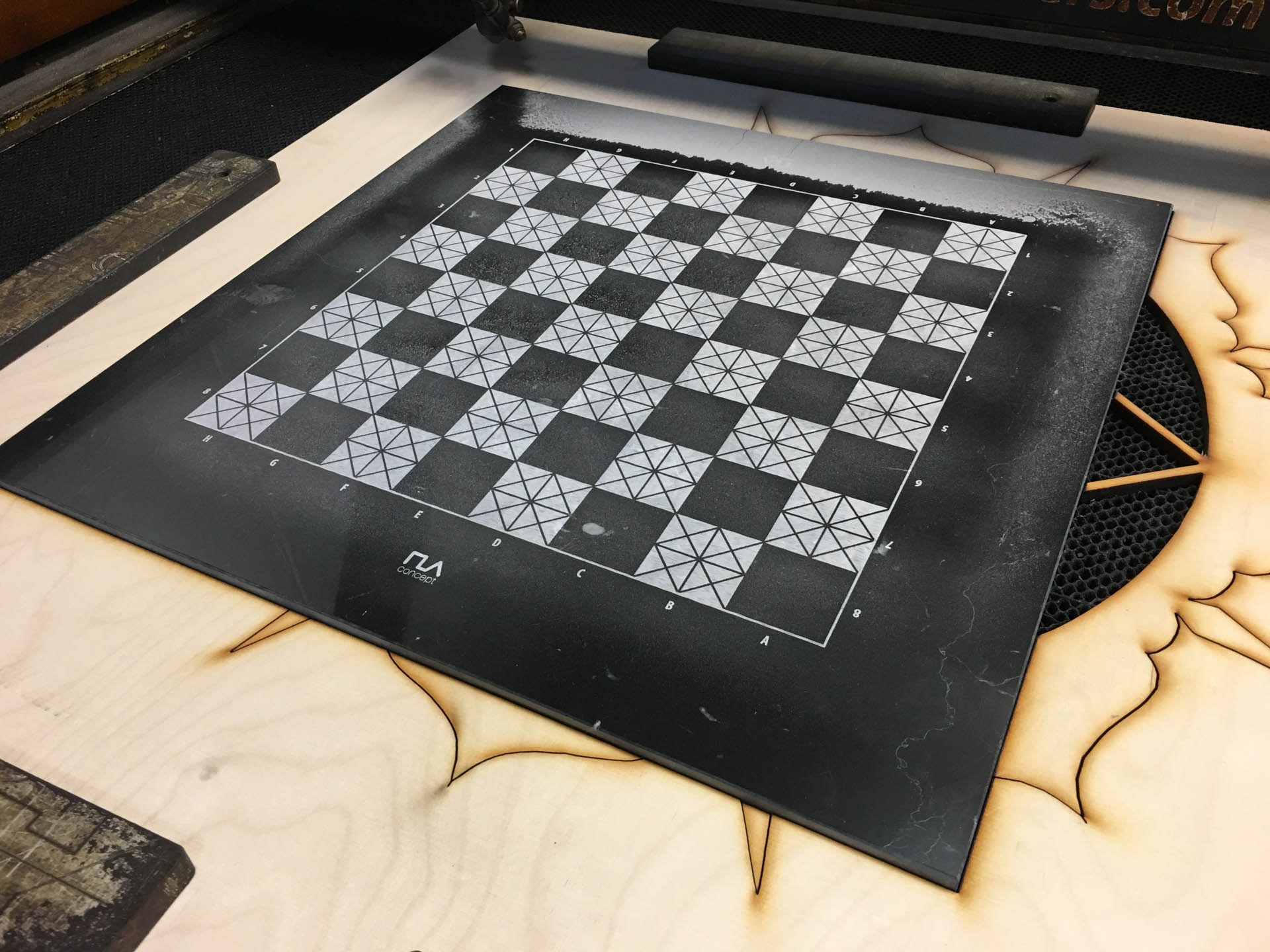
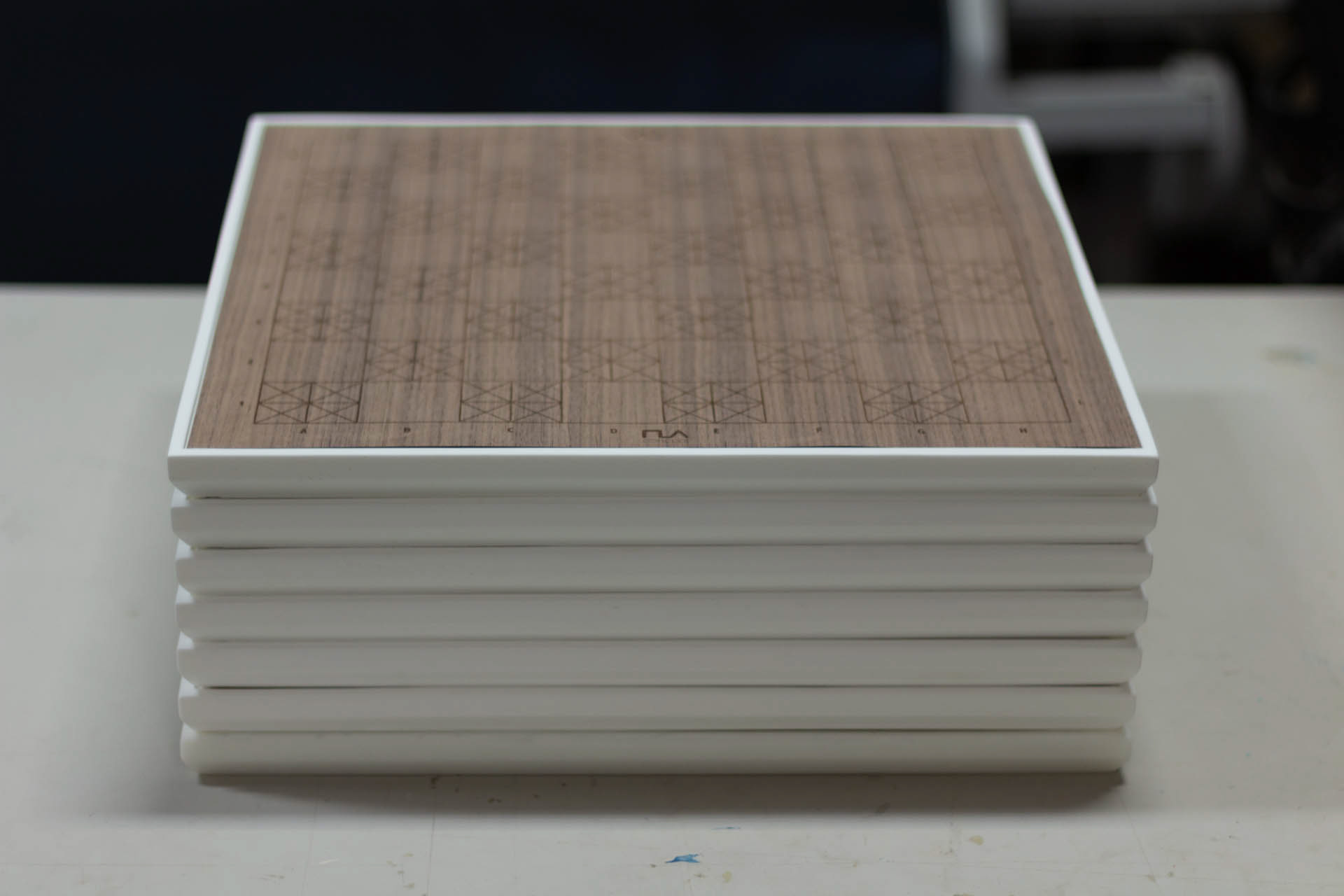

a detailed video of making the chessboard
CAN'T HURT TO ADD NEW THINGS, RIGHT?
After the initial four set designs, I've added a few more designs to the collection. Inlaid wooden boards, exposed edge plywood boards, pastel colored boards, translucent chess pieces and pearl pigmented chess pieces.
I've also changed the design of the king, queen and pawn a little bit. The top corners were very sharp so sometimes they were scratching the mold. I've added a few mm of flat face so now it's not sharp and easier to hold too.
